We’ve curated a packing list with our favorite eco-friendly travel products to help you reduce your footprint and travel more sustainably. Plus, we’re sharing tons of insider tips to help you become a more responsible traveler (which is more important now than ever!).
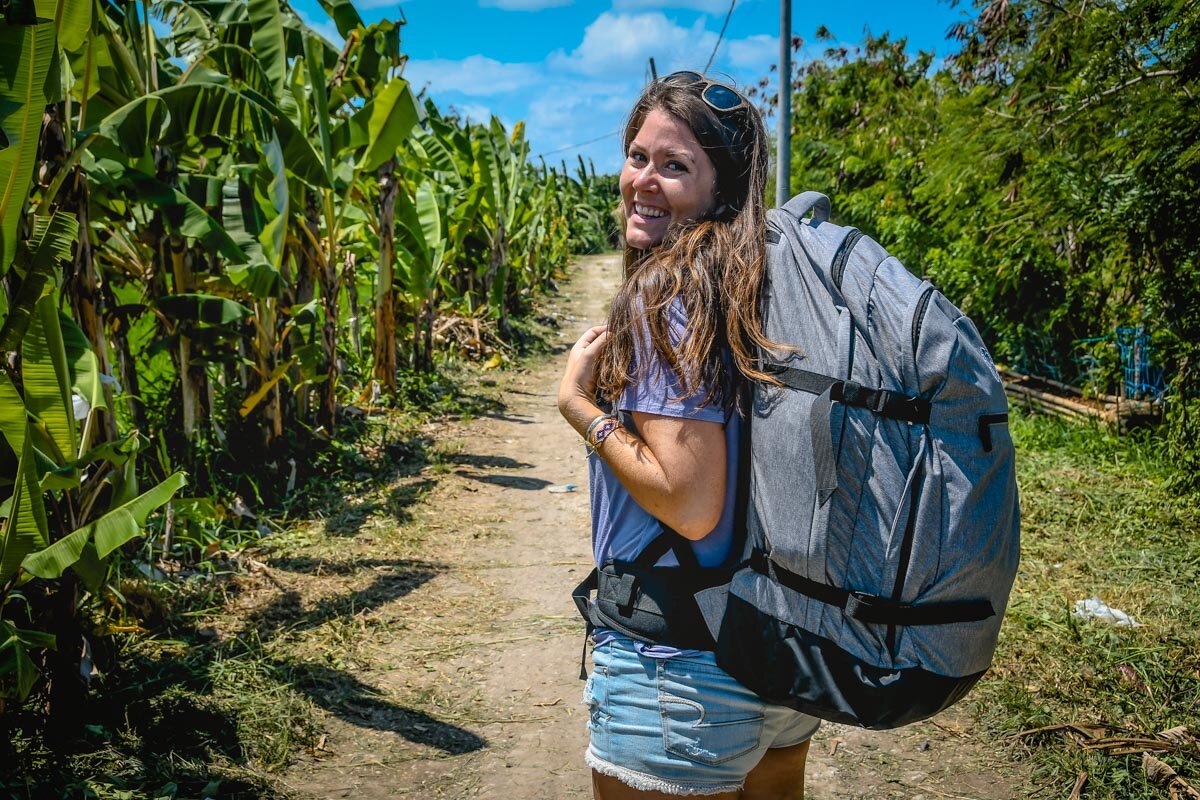
“Sustainable travel” has become a buzzword in recent years, and we think it’s wonderful that people want to learn more about traveling responsibly.
That said, sustainable travel isn’t just a trend to use in a hashtag and forget about. It really does require effort, a mindset shift, and even a bit of — dare I say — sacrifice.
It also means you might need to pack a little differently than you may be used to…
Don’t worry, we’re here to help! We’ve compiled a list of our favorite eco-friendly travel products that helps lessen your footprint no matter where in the world you may be.
From reducing single-use plastic, to lessening your CO2 footprint, to supporting businesses that are making great strides for the environment, this eco-friendly packing list is full of practical and inexpensive gear that’ll help you travel more responsibly.
Why it’s important to think about what you pack
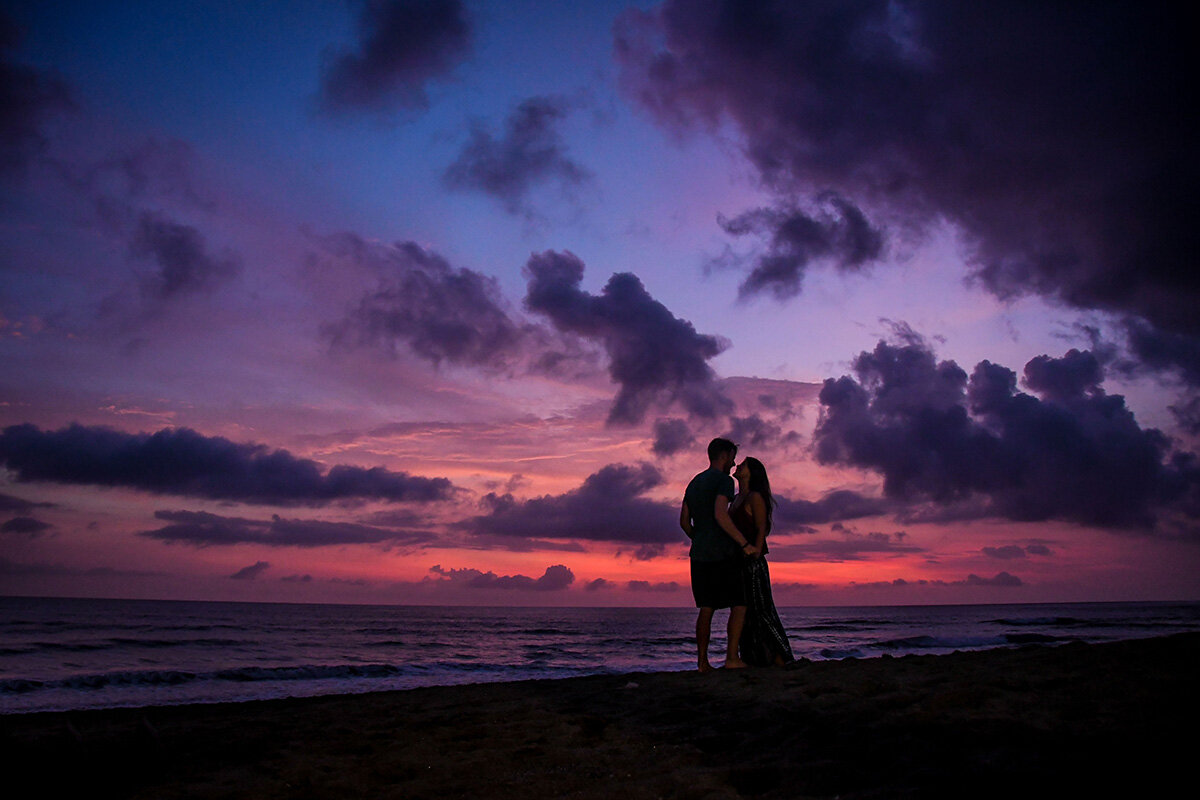
It’s simple: If we are privileged enough to travel, we must take responsibility for our impact on the places we visit.
Travel can have a powerful impact on the communities you visit. And it’s up to you to make that impact a positive one.
While travel inevitably comes with a carbon footprint, there are simple ways you can reduce the waste you create along the way. The best way to do this is to come prepared (aka pack products that help you be more eco-friendly).
With the right items in tow, you’ll be ready to say no to single-use plastics, reduce the amount of waste you send to the landfill, and support some pretty cool initiatives while you’re at it!
Because as we’ve learned, it’s much easier to make good choices and minimize your footprint when you’re prepared with the right gear.
Tips for choosing eco-friendly travel products
We’re sharing some of our favorite products that we personally use and love, but we want to equip you with some advice and tools so you can figure out what eco products work best for you.
Below are some tips and things to consider as you curate your own eco-friendly packing list:
1. Use what you ALREADY have
One major point we want to make is that you DO NOT need to go on a huge shopping spree and spend a ton of money. In fact, the best thing you can do is to see if you already have items that will help you be a more eco-friendly traveler. Thrift stores are also an excellent way to find items you may need while keeping them from going into the landfill.
2. Take good care of your belongings
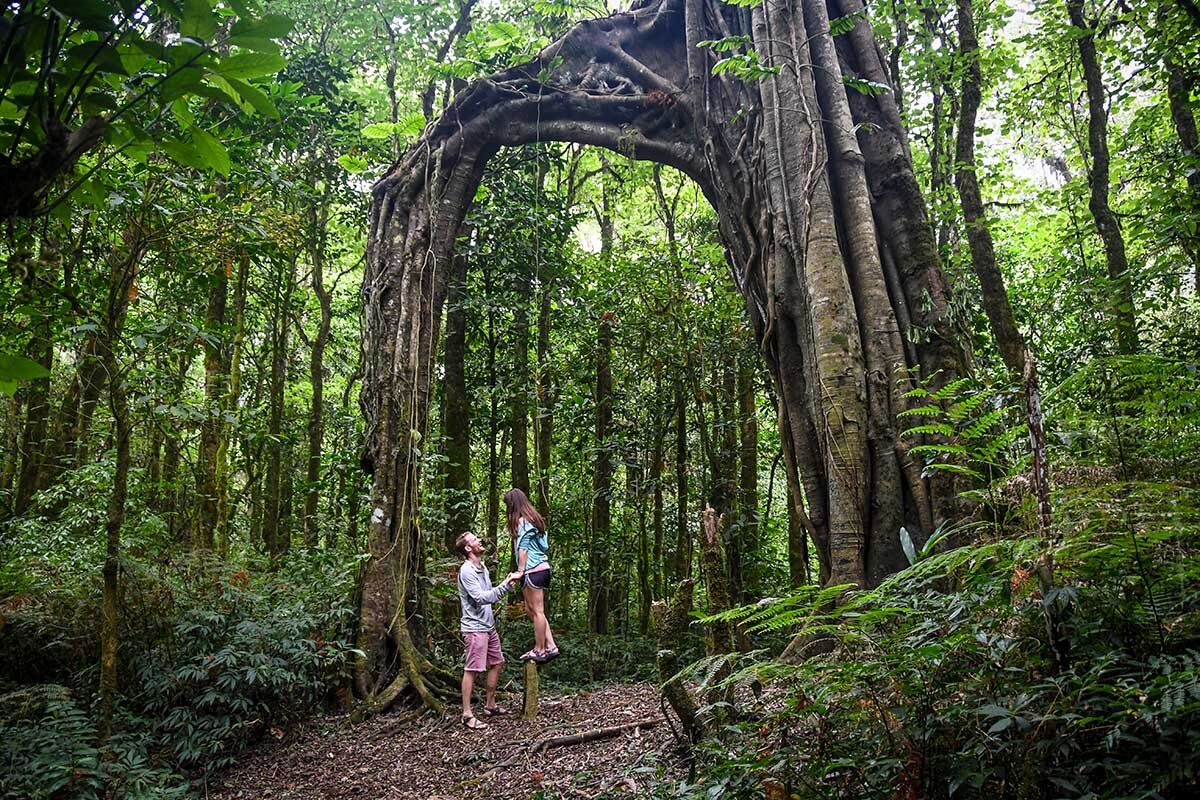
On a similar note, be sure you’re taking good care of your gear, fixing it when necessary so you can get as much use out of it as possible.
3. Dig into brands
While this isn’t always possible with every single purchase, we like to dig into brands’ values and practices whenever possible. (Especially when it comes to larger purchases.) It’s kind of counter-productive to purchase an eco-friendly item from a company that is known for poor environmental practices.
We know all too well however, that this can sometimes be difficult. Do your best, and create a list of brands you love and trust that you can support in the future. (We’re sharing some pretty great ones in this article!)
4. Use these items at home too!
If you curate a “kit” of gear that helps you travel more responsibly, don’t just leave them sit in your backpack when your trip is done. Use them at home. Making it a habit to use eco-friendly items is the best way to reduce your overall impact (at home or away!).
5. Learn some phrases in the local language
If you’re traveling to a place where a language other than your native tongue is spoken, make it a point to look up a few phrases that will help you say no to single-use plastics. This way, you won’t receive the unnecessary items in the first place.
“No ______, please.” Now, write down the translation for: straw, bag, fork, spoon, etc.
Depending on where in the world you’re traveling, you may also want to know how to ask, “Where can I fill my water bottle?”
Write these phrases down on a piece of paper that you keep in your wallet for easy access.
Insider Tip: It’s a good idea to have a staff member at your hotel or hostel check your translations and pronunciation to ensure locals know what you’re talking about.
Our favorite eco-friendly products for travel
Without further adieu, let’s dive into some of our very favorite eco products that we always carry with us.
1. Water sterilizer
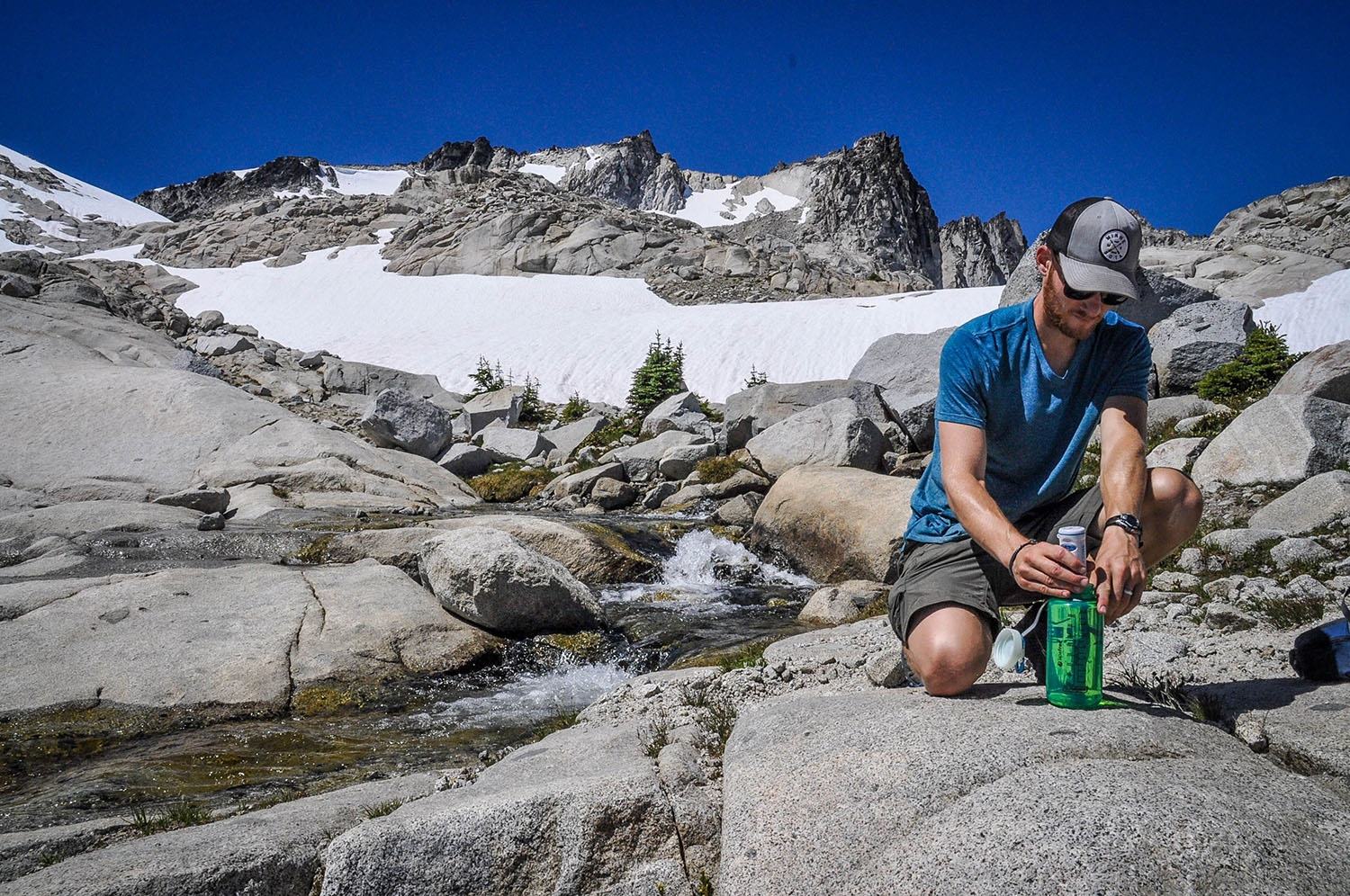
How it helps: It saves plastic!
Buying bottled water is a habit we never really got into, but often when traveling, it isn’t safe to drink the tap water. A Steripen was one of the very first purchases we made before ever setting off on our travels, and in the four years since we bought it, we’ve gotten so much use out of it.
We hardly ever need to buy bottled water because we fill it up at the tap and sterilize it for drinking.
From Thailand to trekking in the Himalayas to all over South America, our trusty Steripen has been with us all around the world! We’ve been very happy with our Steripen, but there are other great water sterilizers out there. Find one that works best for you, and start saving plastic (and money!).
Alternative: We’ve heard amazing things about the Grayl water bottle which has a build in purifier and doesn’t require sucking through a straw. Though a bit pricey, it simplifies your packing since its a 2-in1 water bottle + filter.
2. Water bottle
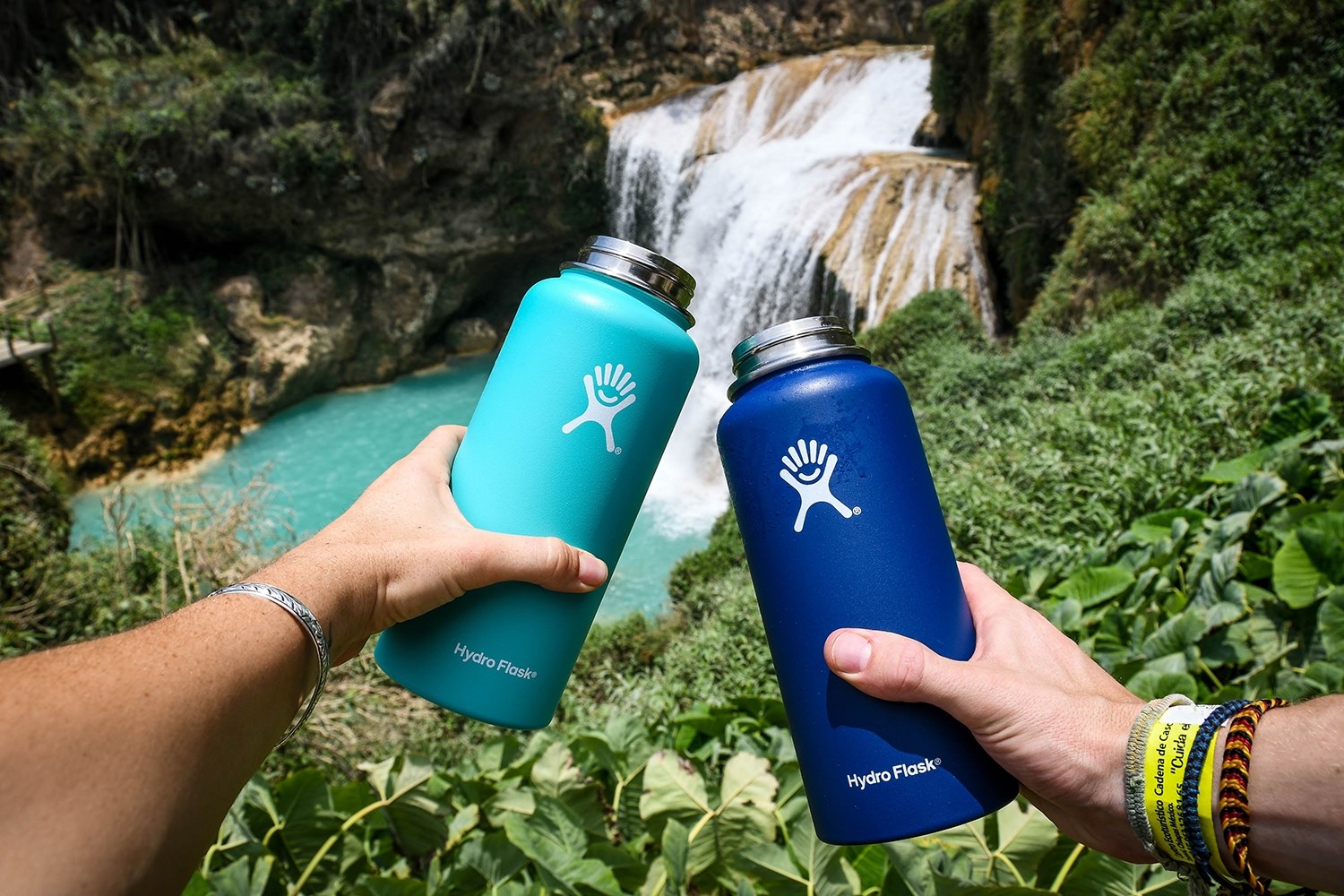
How it helps: Saves plastic!
This may be a no brainer in your day-to-day life at home, but having a water bottle on you when your traveling really helps cut down on unnecessary plastic use.
While it can be super tempting to go out and buy a fancy new water bottle, start with what you already have.
That said, if you’re in the market for a new bottle, here are some that we love:
- We’ve had Hydroflask water bottles since 2011, and are pretty obsessed. Not only do these insulated bottles keep your water cold, but the company does great things for the environment.
- We’re also longtime Nalgene fans because their bottles are lightweight, BPA free and super durable, making them especially good for bringing on outdoor adventures.
Plain or funky; big or small. A reusable water bottle saves plastic, so it’s always in style!
3. Reusable straw & cleaner
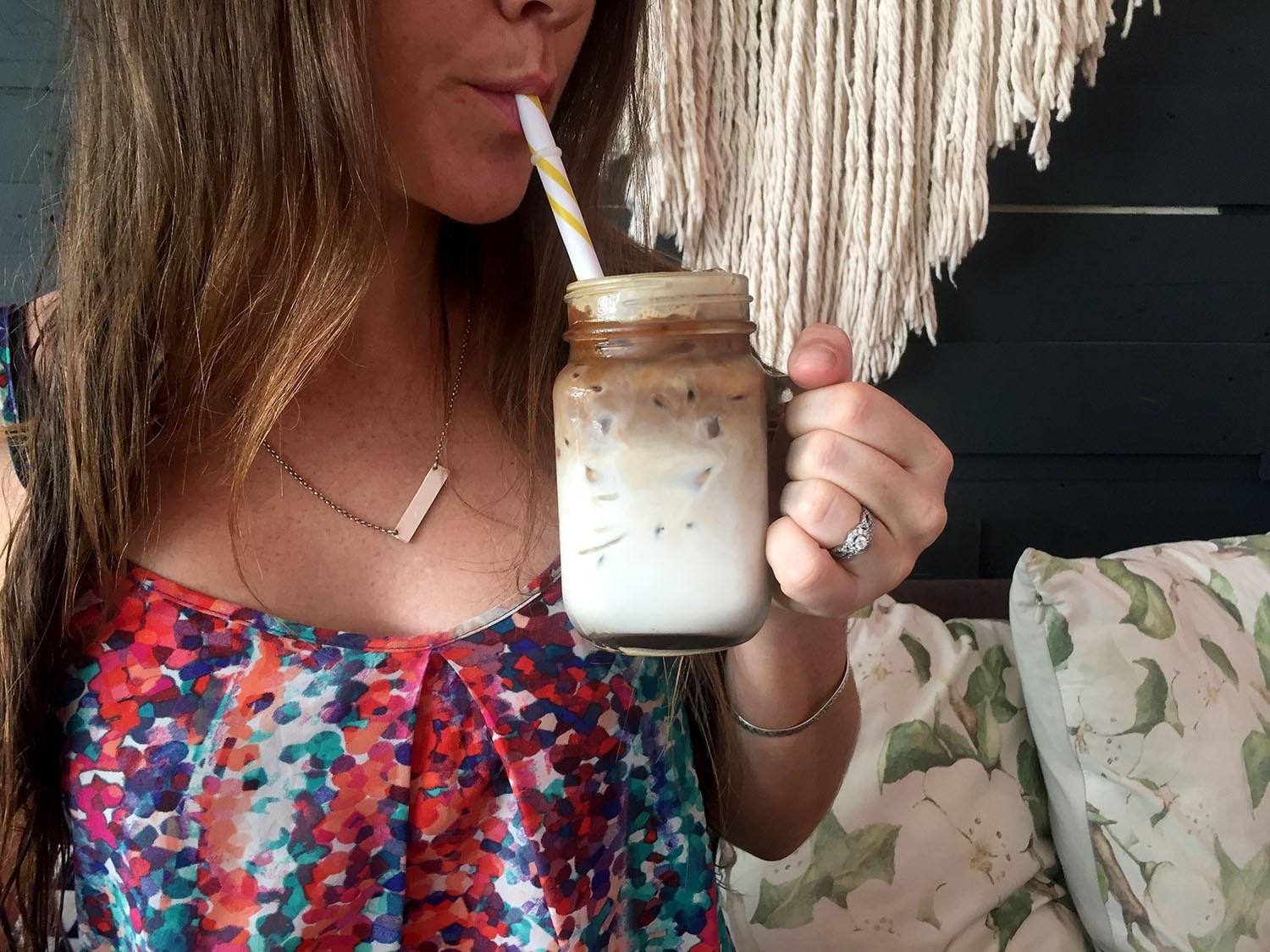
How it helps: Saves plastic!
Did you know that straws are in the top 10 items of trash collected from the oceans? Any way you look at it, disposable straws are a one-time use item that really is not necessary.
Often times, you can get by without a straw at all, so you can simply request “no straw, please.” (This is a good phrase to translate and memorize if you’re traveling to a place where you don’t speak the language.)
Sometimes though, it’s nice to have a straw with, say, an iced coffee or a smoothie. Carrying a reusable straw (and a cleaner!) with you takes up hardly any space, and you’ll know your straw is one that won’t end up in the ocean.
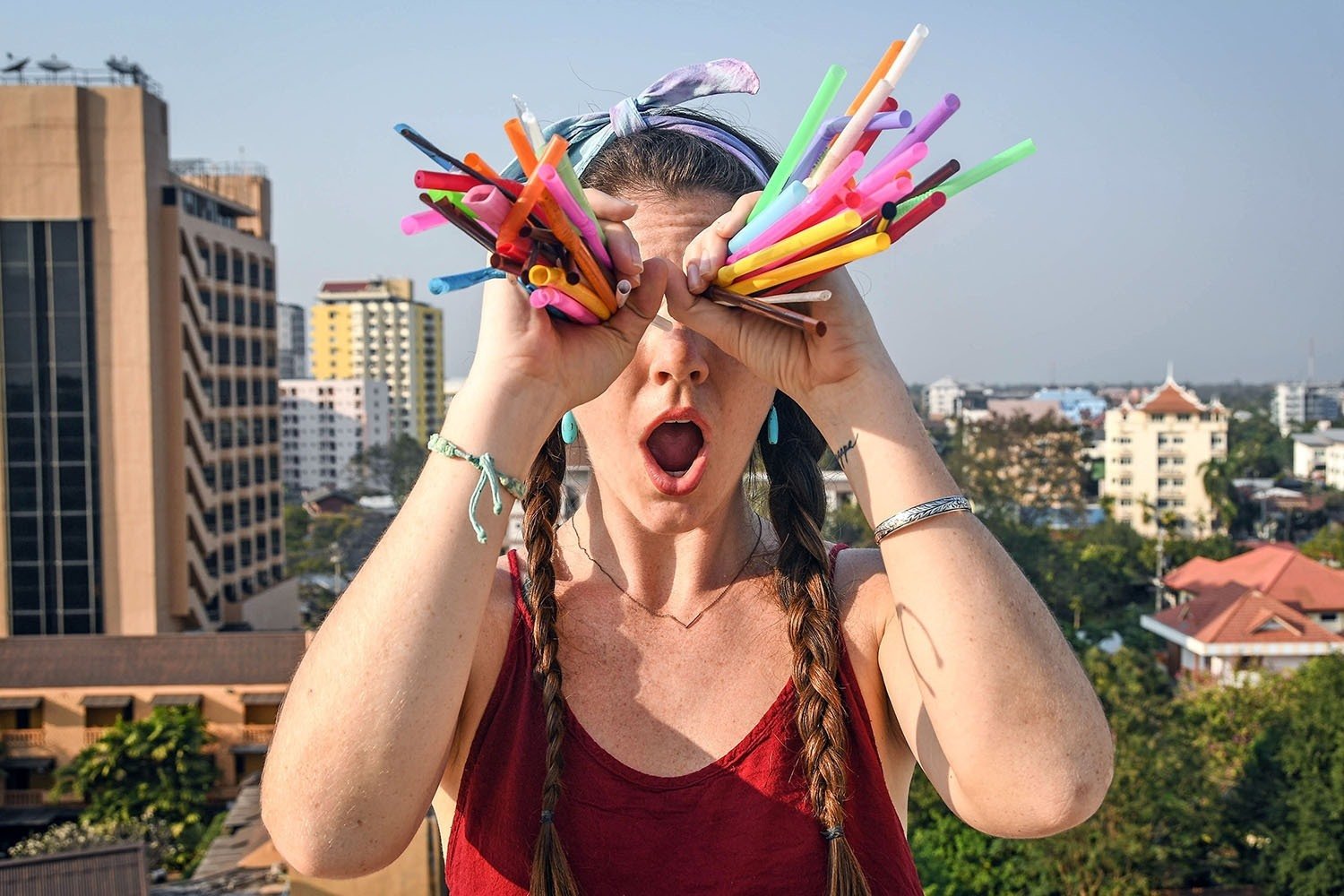
A reusable straw eliminates your need for the disposable kind, and a cleaning brush will help it last longer and stay fresh smoothie after smoothie.
There are tons of reusable straws out there to choose from – BPA-free plastic, glass, stainless steel, silicone bamboo – it might be hard to choose a favorite!
4. Collapsible cups
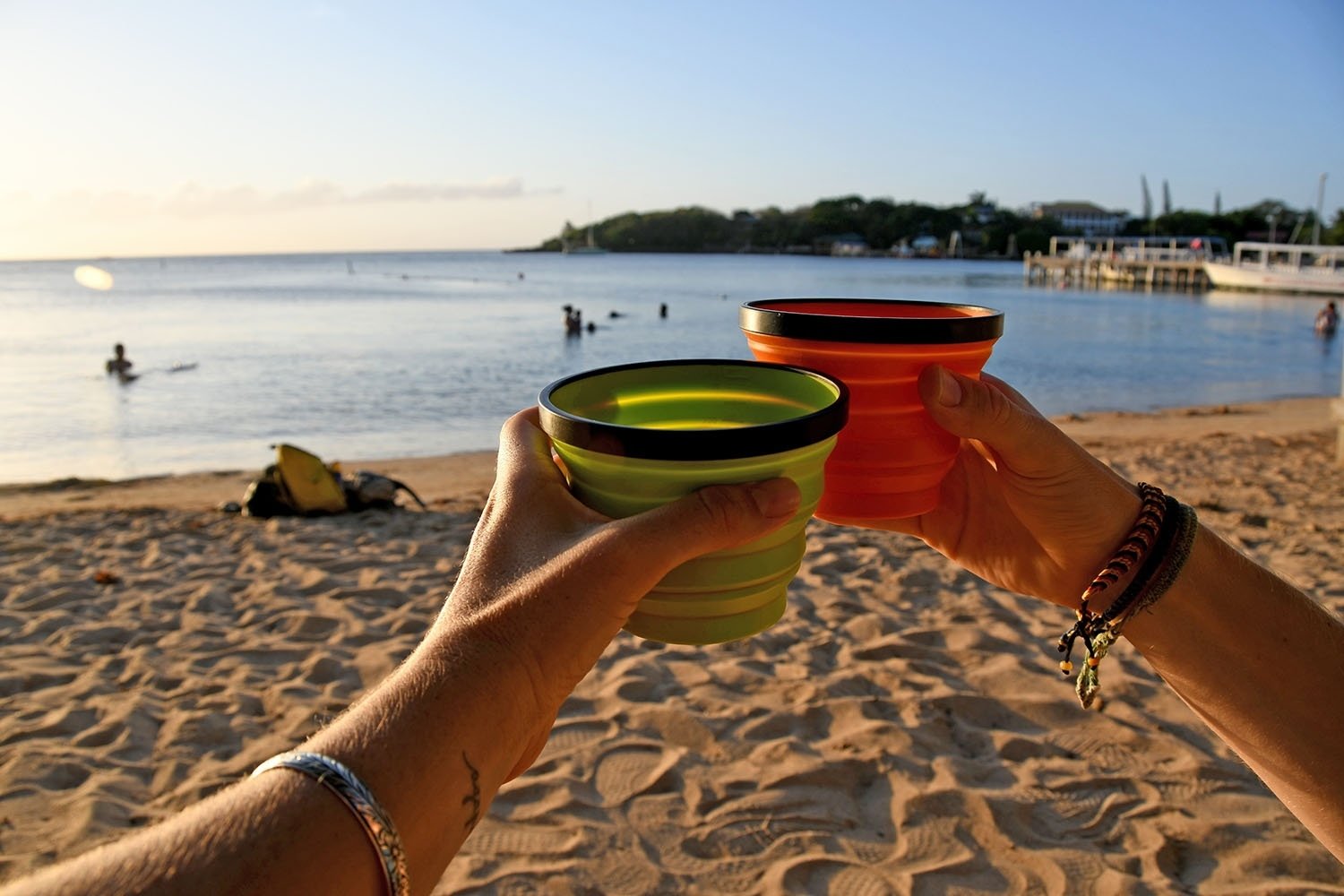
How it helps: Saves plastic!
These collapsible cups fold up nice and small and make a good alternative to disposable cups when enjoying a beer or wine. Plus, they hardly take up any room in our bags, so it’s a no brainer. We’ve even used them as bowls in a pinch.
This is one of our most frequently-used items, and we’ve had them for 7+ years now, so theyare a great thing to add to your packing list.
Cheers to reducing our plastic usage!
5. Reusable Utensils
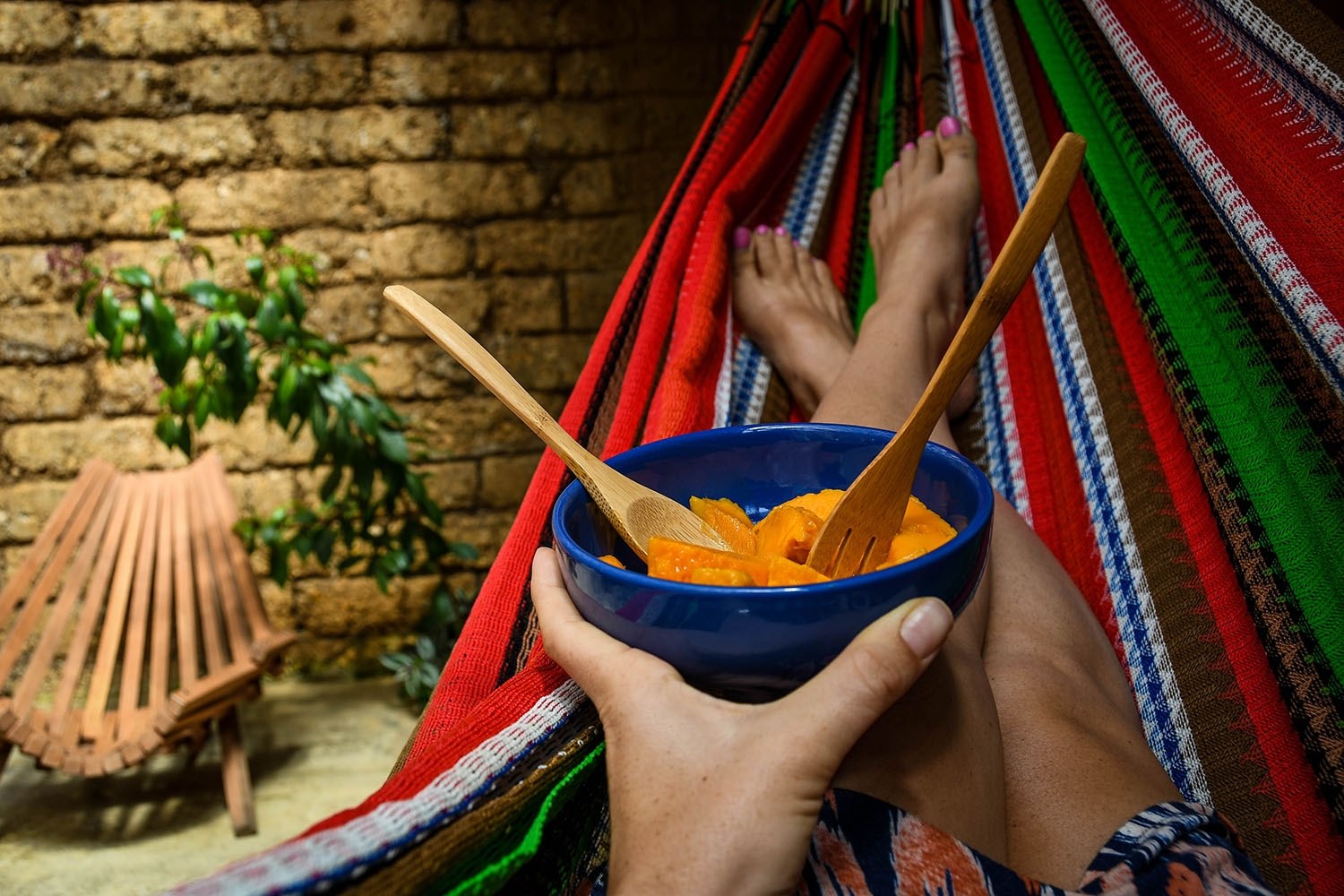
How it helps: Saves plastic!
A reusable set of utensils will help you say no to the plastic kind that get thrown away after one use.
We love our bamboo set from To Go Ware because they come in a compact carrying case, yet they’re full-sized utensils so eating with them feels comfortable. Plus, they are TSA-friendly so we don’t need to worry about getting out fork and knife confiscated on flights. Speaking of which, having these handy on a plane means you can say no to the package of plastic utensils that often come with in-flight meals.
If you don’t have reusable utensils, you can always just clean and save the disposable kind to reuse. There’s no reason they need to be thrown away after just one use.
Psst! Going on a long hike and want to lighten the load? This handy spork might be just what you need!
6. Sewing Kit
How it helps: Reduces landfill waste!
Traveling with a mini sewing kit is clutch. It has helped us save quite a few items that we would have otherwise had to get rid of. Throwing items away should really be your last resort. Instead, fix them up and extend their life.
Duct tape can come in handy for some minor fixes too.
7. Reusable bags
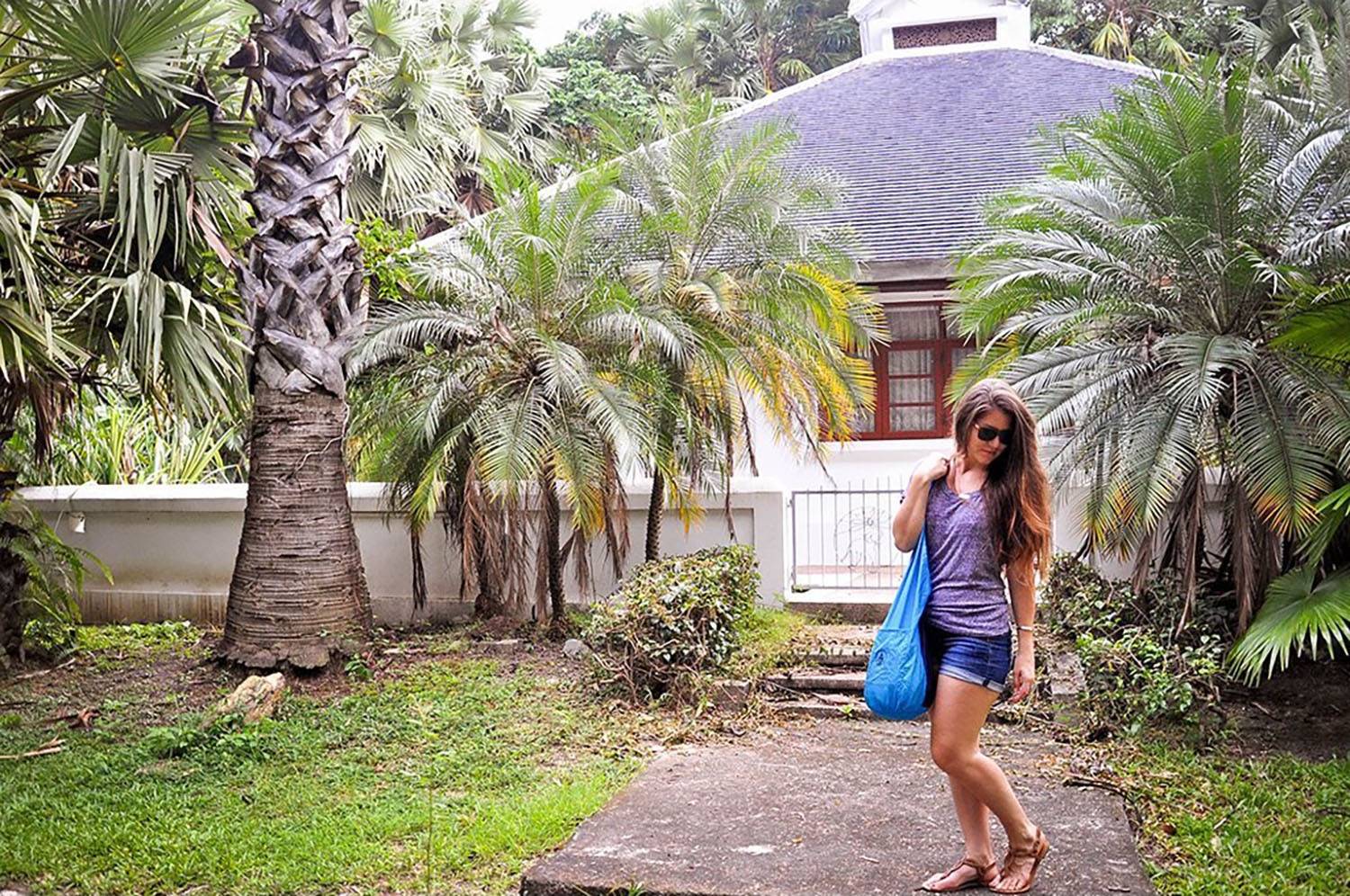
How it helps: Saves plastic!
Oh how plastic bags annoy me! But even with the best intentions, there are times when I unexpectedly stop at the grocery story and buy much more than I can carry in my hands.
Always be prepared by keeping a reusable bag with you. We are obsessed with our sling bag because it stuffs up super small, and is sustainably made with upcycled hammock material.
8. Silicone Baggies
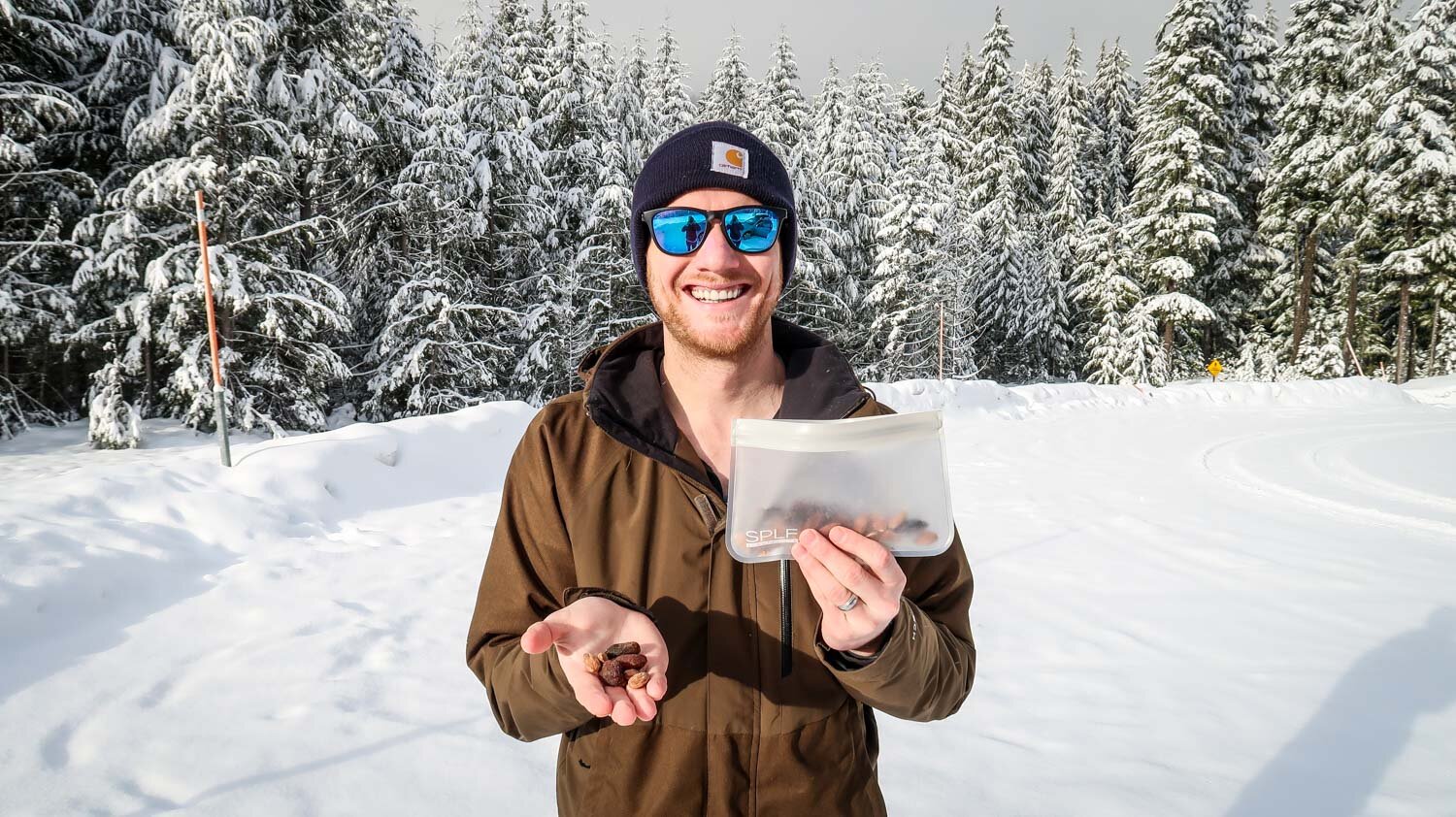
How it helps: Saves plastic!
If you like to bring snacks with you wherever you go (that’s us for sure!), consider packing silicone baggies instead of the disposable Ziplock kind.
These are perfect for trail mix, sandwiches, fruit, and well, just about anything! They’re easily washed, and will last you for years. We’re pretty obsessed with ours!
Alternative: Here’s a super budget-friendly option!
9. Mesh produce bags
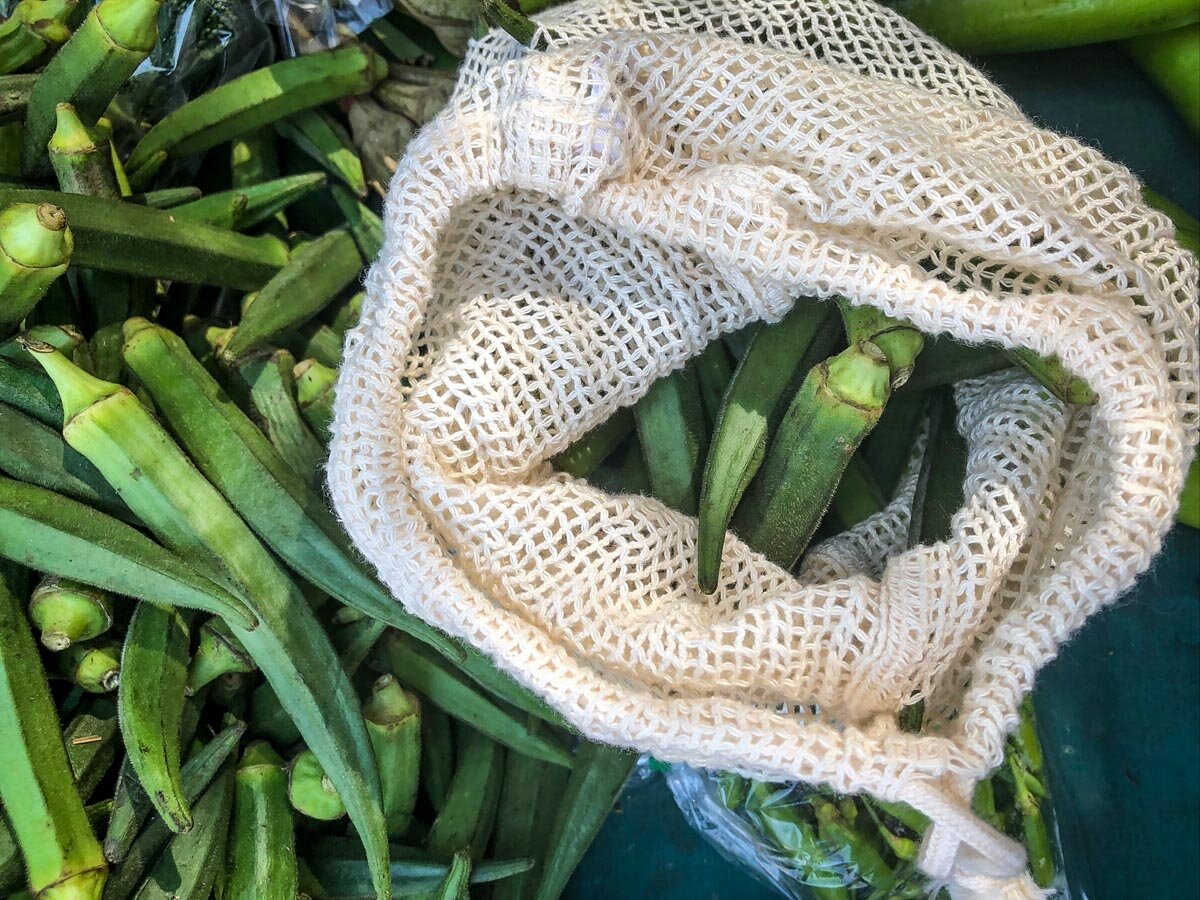
How it helps: Saves plastic!
Another item we usually pack is a few mesh produce bags. We love shopping at local markets on our travels, sampling local fruit or bringing produce back to our Airbnb to cook. This helps us stay healthier on the road, save money (because eating out for every meal can add up!), and is an opportunity to support local farmers.
Instead of collecting a ton of plastic bags at the farmers market, we like to use these bags instead.
10. Takeaway containers
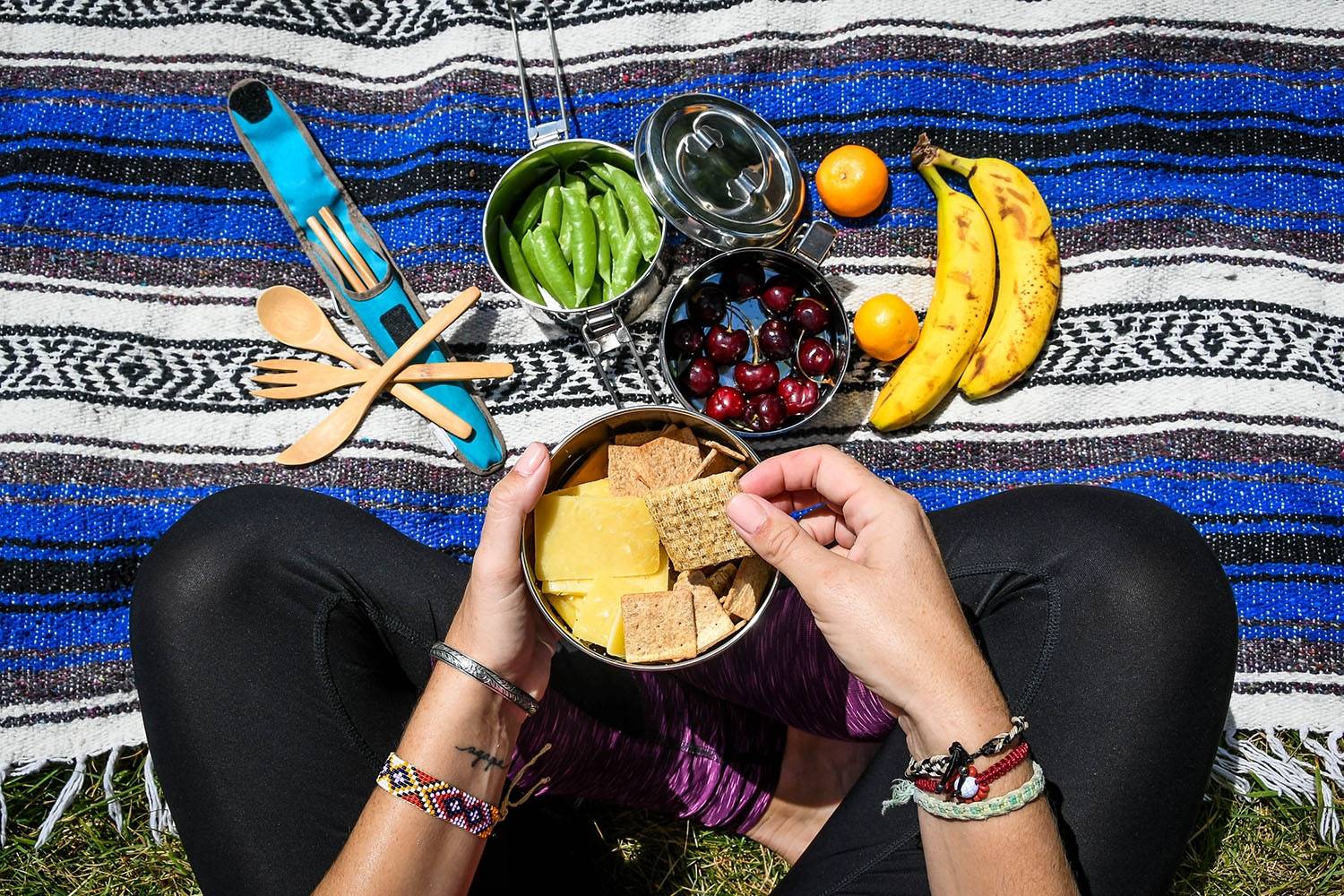
How it helps: Saves plastic and styrofoam, as well as prevents food waste!
Pack some durable and reusable to-go container that can be used instead of the styrofoam takeaway containers most restaurants offer. This prevents food from being wasted and it creates less trash. Double win!
11. Reusable coffee mug
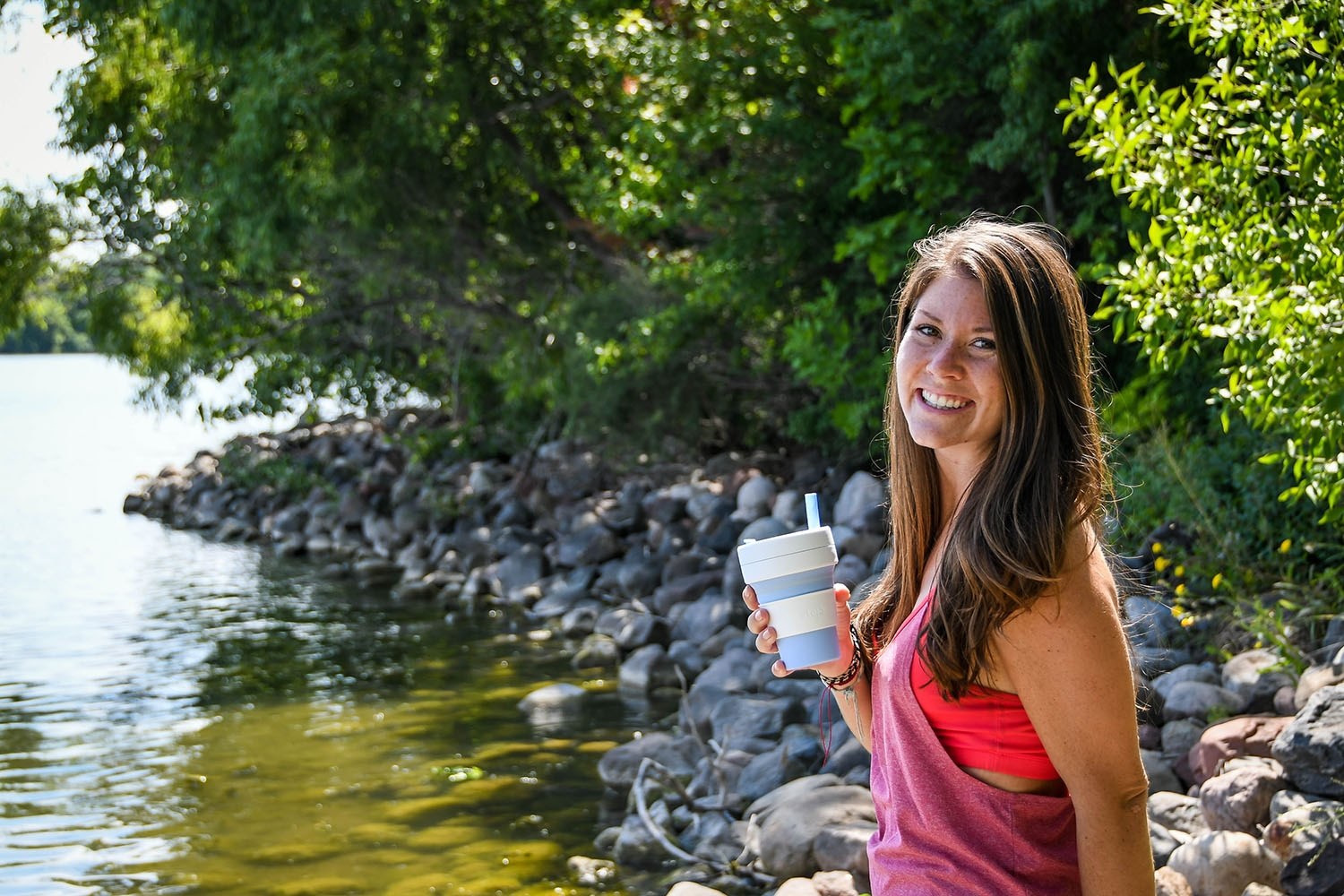
How it helps: Saves paper and plastic!
Raise your hand if you’re a coffee drinker! (me, me, ME!) A travel coffee mug is a good way to be a little more environmentally friendly at home or on your travels. But traveling with an insulated coffee mug can be tricky since they are so bulky.
Well, we found a solution! Stojo coffee mugs are collapsible so they won’t take up much space in your bag. Plus, they come with a straw, so you can use them for iced lattes as well as hot drinks.
12. Microfiber towel

How it helps: Saves water!
Sometimes it’s really nice to hop out of the shower at a hotel and wrap up in a big fluffy towel that’s provided. When you’re staying a few days in one place, it makes sense. But sometimes a little sacrifice can go a long way.
When you are just spending one night, you can opt to use your own towel and inform housekeeping that you did not use the provided towels. Hopefully they can be given to another guest instead of using more water. We love microfiber towels because they dry super quickly and pack up small!
Eco-Friendly Tip: Did you know when you wash microfiber towels (or any other synthetic fabrics), small pieces of micro plastics can end up in our water streams? The good news is you can stop this by washing your microfiber towels (and all other synthetics) in this washing bag from Guppy Friend.
13. Kindle
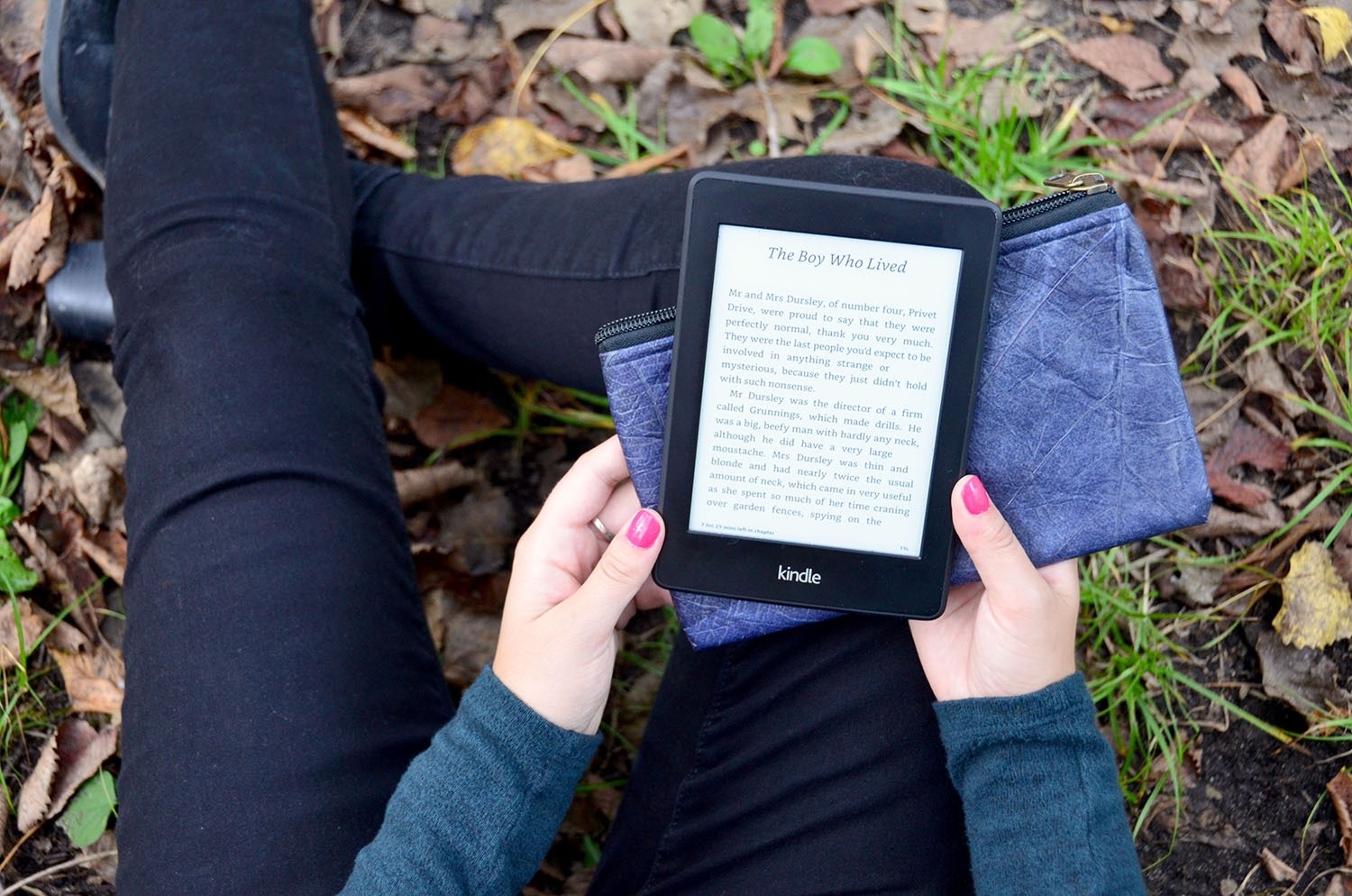
How it helps: Saves paper!
I’m a fan of real, paper books. And don’t misinterpret this as me saying not to buy books. I love the idea of keeping a collection of your favorite titles, or recirculating books when you’re finished with them so they get read time and time again.
But when it comes to traveling, you can’t deny the convenience of a Kindle. The weight of several books isn’t fun to travel with, trust me.
I’ve heard of a popular travel hack where people take a guidebook with them on their travels, and tear out pages and throw them away when they’re finished visiting a certain region. This little trick certainly does lighten up your load, but those pages just go to waste. Instead of tossing them out, get your guidebooks on a Kindle so the weight is never an issue.
If you do go with a paper book, consider leaving it at a hostel when you’re done with it instead of tearing it apart. That way, the book will have a much longer life and it won’t go to waste.
Money-saving tip: We usually try to rent guidebooks from our home library (using the Libby app). It works quite well and we can borrow them for free!
Bonus item: Like the blue pouch pictured with my Kindle? It’s sustainably made from teak leaves and fits a Kindle perfectly. It also works great for organizing charging cords, or just holding your passport and other essential when flying. Get your own leaf “leather” pouch (or another eco-friendly product from Tree Tribe) and get 15% off with this discount code: TWOWANDERINGSOLES15
14. Reusable makeup cloths
How it helps: Reduces waste!
Instead of relying on makeup wipes or bottles of makeup remover, opt for a reusable version.
Choose from small round pads (that resemble the single-use cotton kind), larger rounds for your whole face, or a microfiber cloth like this one.
Each style can be used over and over, then can be tossed in the washing machine with the rest of your laundry or washed by hand.
Personally, I have a reusable cloth, and use warm water and/or a bit of coconut oil to remove eye make up. It works like a charm, and I’ve been using the same cloth for a few years now, reducing my waste whether traveling or at home.
15. Menstrual cup
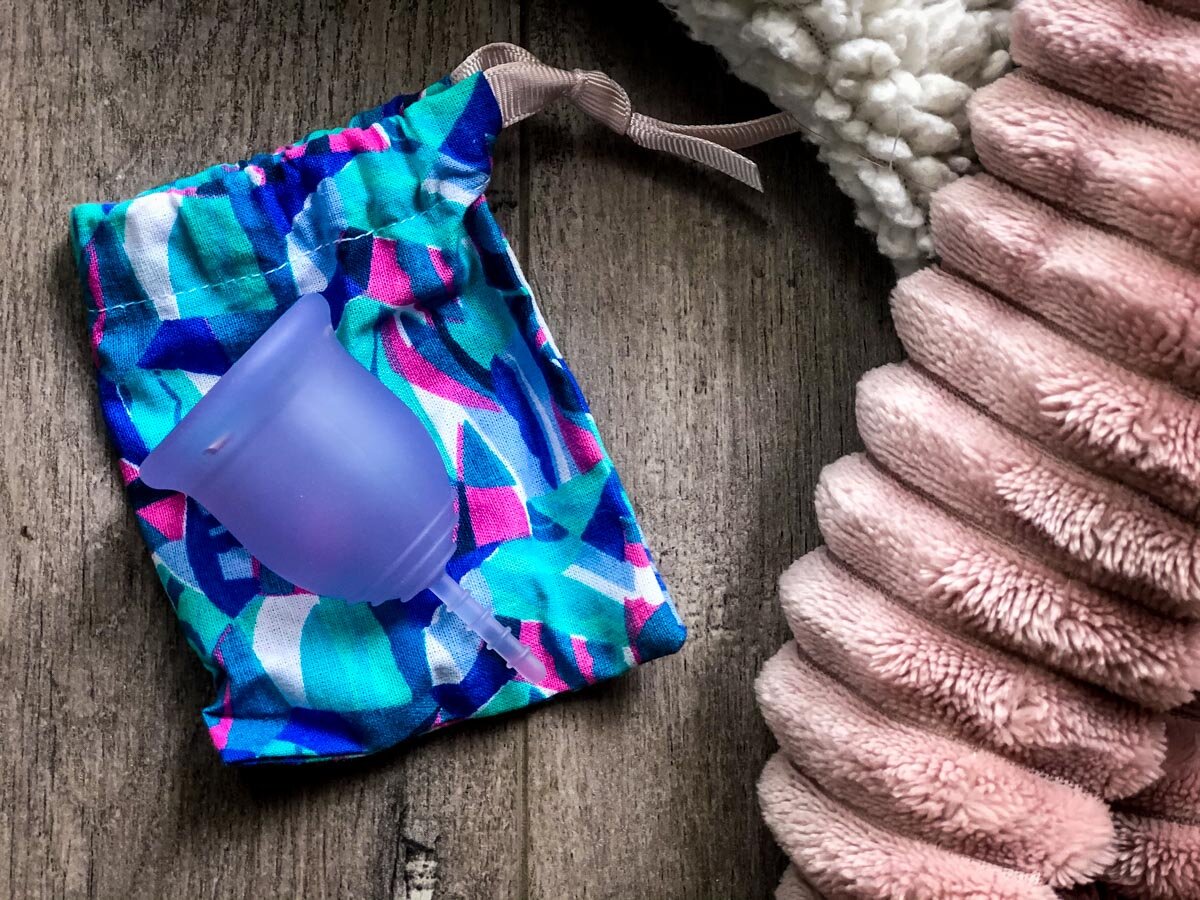
How it helps: Eliminates plastic (& other!) waste
Calling all ladies: You’ve probably heard about menstrual cups, and like me, you may have lots of questions…
I just didn’t know now I felt about the whole thing, but after weighing out how much waste I would save by eliminating my need for tampons, I finally bought a cup. I will admit, it took a few tries to really get used to it. But once I figured out how to insert it properly, I actually love it.
It can be left in for 12 hours, which makes it more convenient that tampons. Plus, it can be difficult to find tampons in certain regions of the world, like many parts of Asia. When you’re traveling long term, that means you’ll need to pack a LOT of tampons. With a menstrual cup, you only need to pack one thing. So much easier.
If you’re still on the fence, let me put it to you this way: Imagine all the waste you will eliminate from your life by cutting out the need for tampons, plastic applicators, wrappers and pads. Plus, menstrual cups can last for several years (the instructions on mine say up to 10!), so you’ll save a ton of money.
Win for the environment. Win for your wallet.
Insider Tip: If you just can’t get on board with the menstrual cup idea, try using tampons that don’t have applicators, like OB brand. This simple lifestyle change will save a ton of plastic (or cardboard) each month.
16. Reusable Razor
How it helps: Saves plastic!
Disposable razors can seem super convenient for travel, but they also create a lot of waste. Often times, the disposable kinds aren’t the highest quality, meaning you’ll be throwing them away much more quickly than a higher-end razor.
Instead of adding to the landfill every month, invest in a quality metal razor where you only replace the blade. Or stick with the type where you only replace the head and reuse the body over and over again.
17. Laundry detergent tabs
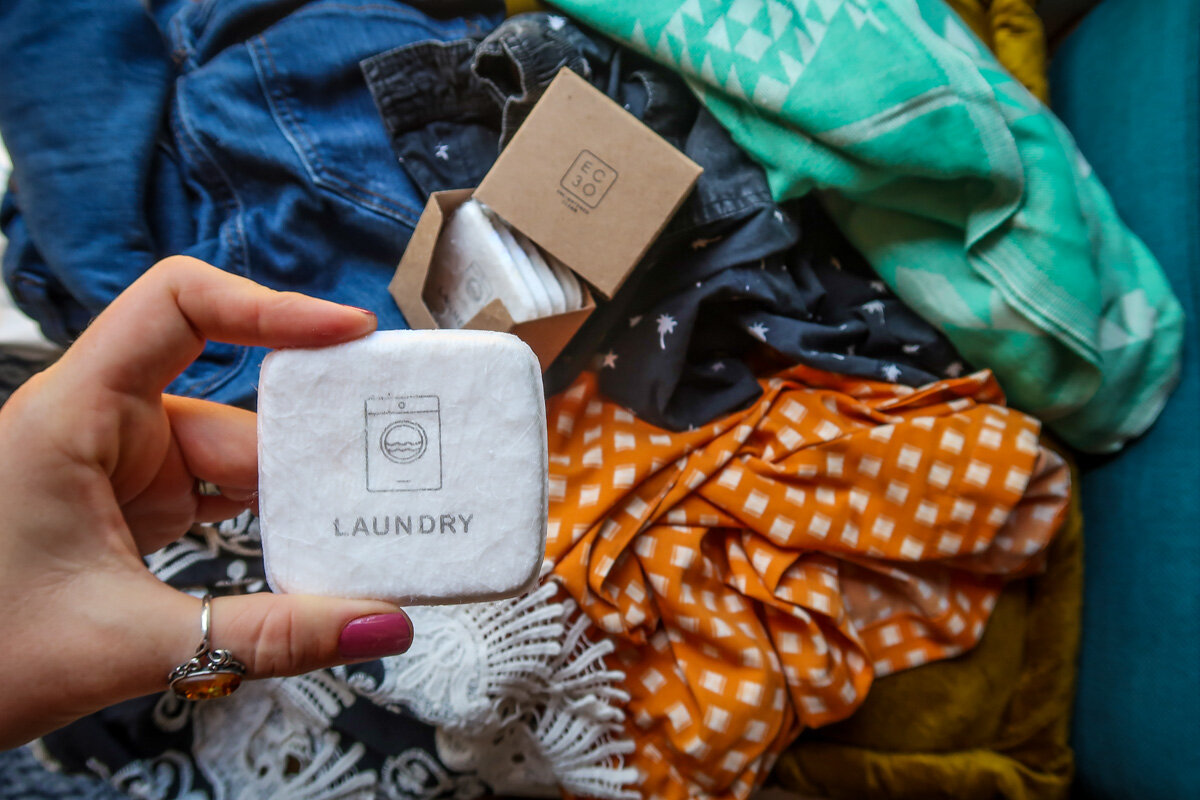
How it helps: Reduces waste!
If you are traveling for more than a couple weeks, it’s likely that you’ll need to do a load of laundry (or two!).
Some regions in the world are incredibly easy (and inexpensive) to have your laundry done for you. In most parts of Asia, Central and South America, we typically have our clothes washed at local laundry shops or our hostel. Easy peasy.
But in North America, Oceania, and Europe, it can be extremely expensive to have your laundry done frequently. Instead, going to a laundromat and doing it yourself can save quite a bit of money. In this case, we like to pack “laundry tabs” so we don’t have to constantly buy bottles or individual packets.
This pack from Sea to Summit is super tiny, so it takes up virtually no space in your bag. We sometimes even use these to wash a few clothes by hand in a sink.
For larger loads, these zero waste laundry swatches from EC30 (pictured above) are amazing and have some serious cleaning power!
18. Solid shampoo bar
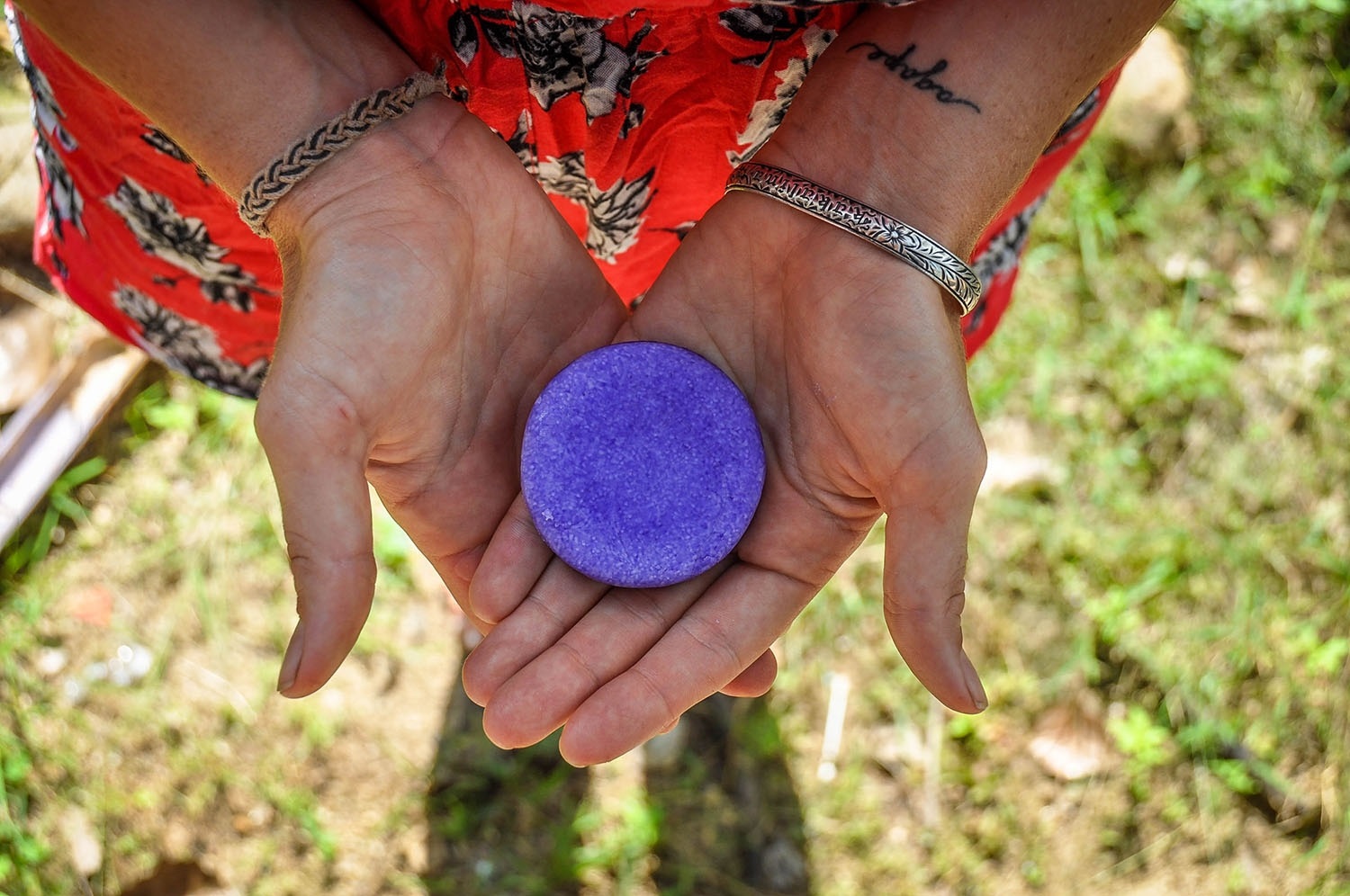
How it helps: Saves plastic!
Solid shampoo has been a game-changer for the way we travel. Instead of stocking up with new travel sized plastic bottles every couple weeks, this solid bar of shampoo lasts me between 3-4 months (I have long, thick hair!) and is easy to fly with since it’s not liquid. Plus, no spills!
If you’ve been following our journey for a while, you know we’re huge fans of Lush solid shampoo bars, but there are plenty of other great options on the market, like Ethique and Love, Beauty and Planet (available at Target). We’ve even tried out a shampoo bar from Trader Joe’s!
Browse solid shampoo bars to see which would work best for you, or pick them up in store.
Insider Tip: My one issue with Lush shampoo bars is the tin they come in. I find it very hard to get it open in the shower because of wet hands. But I’ve found a solution! This plastic container is the perfect size for Lush solid shampoo and you can pop it open easily in the shower with just one hand! Even though it’s plastic, it can be used over and over again.
Your first few times using a solid bar may seem a little strange, but trust me, you’ll get used to it. (It’s all I use now, whether at home or traveling!) Instead of rubbing the bar on your hair, work it into a lather in your hands, then work it through your hair. Much easier!
Another general (life) tip is to only wash your hair every 3-4 days. (Or even longer if you like!) It will take a little time to “train” your hair, but eventually it will be less greasy and won’t need to be washed as often. This saves water and shampoo, plus it’s much healthier for your hair.
19. Other solid toiletries
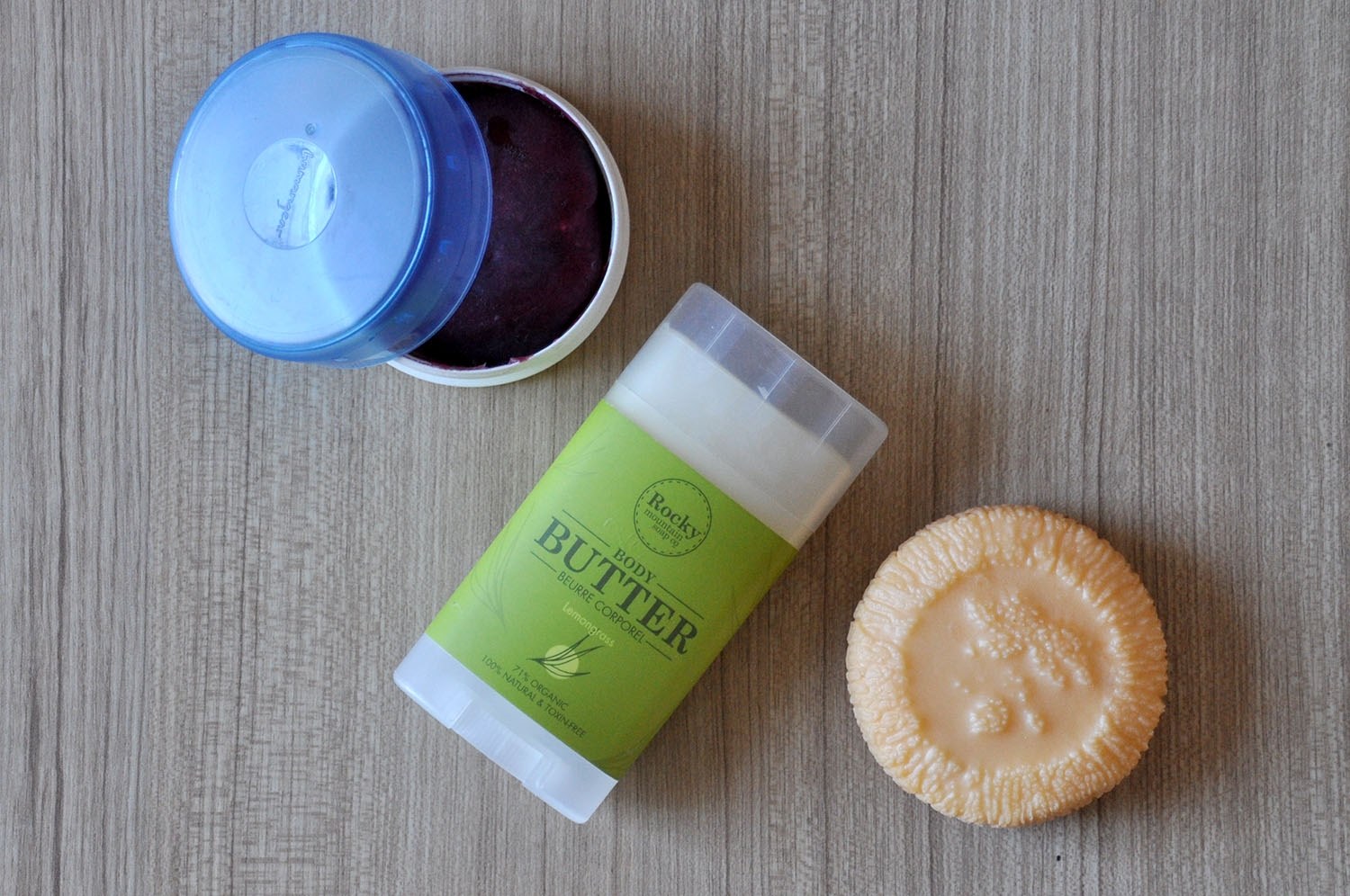
How it helps: Saves plastic!
On a similar note to the sentiments above, try other solid toiletries:
- soap instead of body wash
- body butter sticks instead of lotion
- solid conditioner
- solid face wash
- solid perfumes
- solid bug repellant
Solids are easier to travel with because they won’t leak and you won’t have to worry about liquids when flying. Plus, they tend to last longer!
20. Bamboo Toothbrush
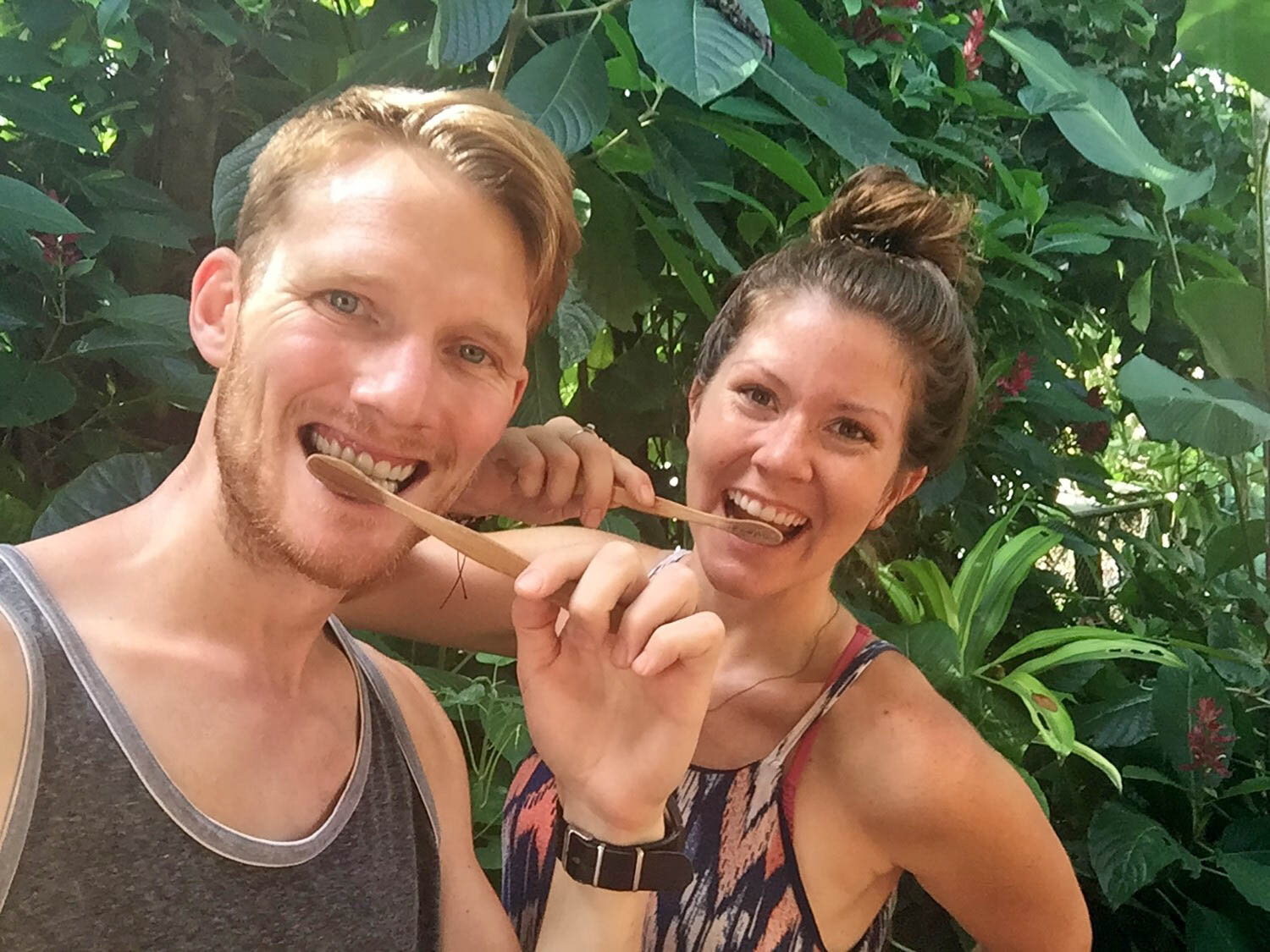
How it helps: Saves plastic!
At home, we have fancy electric toothbrushes (gotta take good care of those chompers!), but when we travel and want to keep our backpack small, we have started opting for bamboo toothbrushes instead of the plastic kind.
These will breakdown once they’re thrown away. Plastic toothbrushes, on the other hand, will be around long after our lifetime.
21. Reef Safe Sunscreen
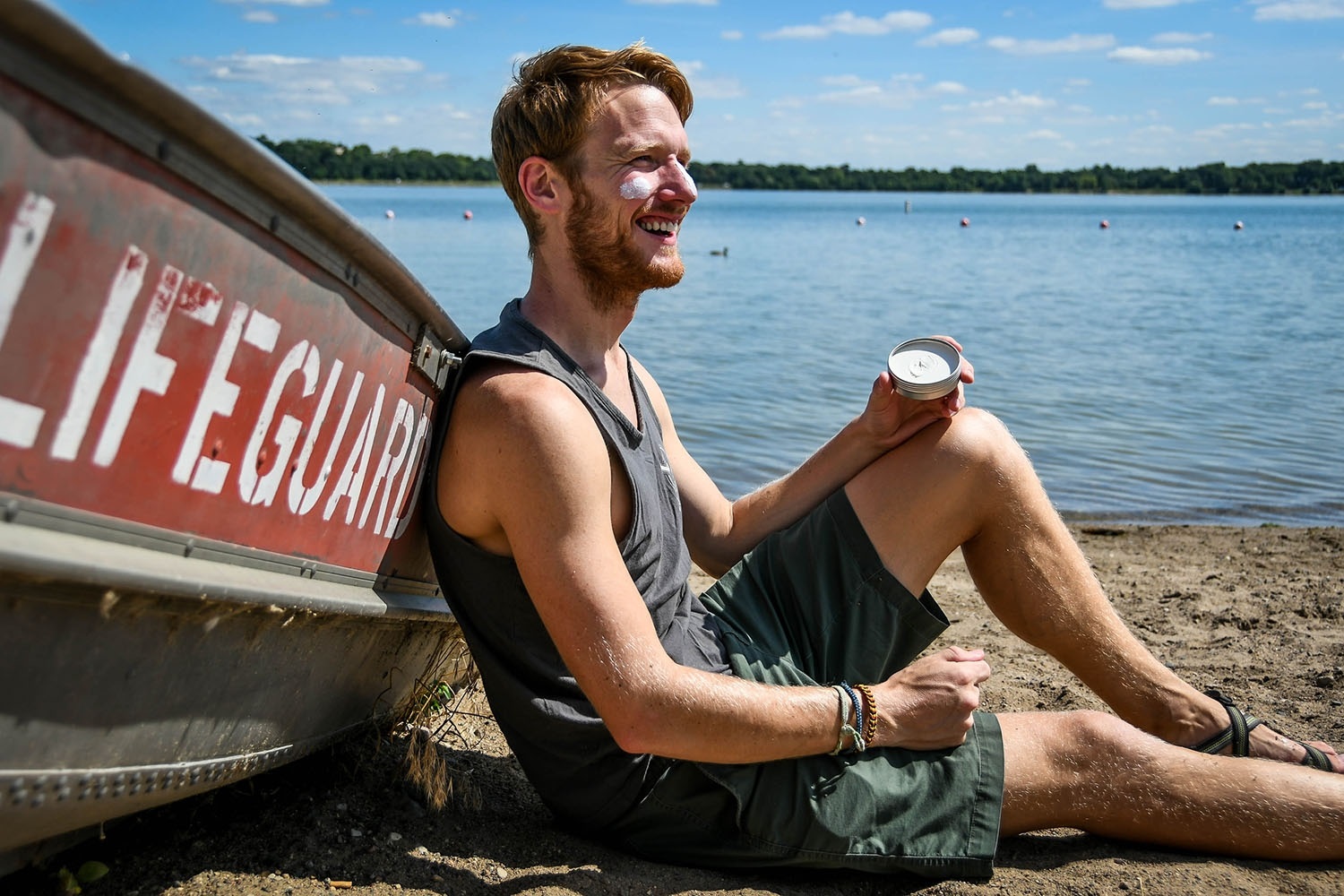
How it helps: Protects coral reefs!
Did you know that traditional sunscreens contain chemicals that are harmful to coral reefs and marine life?
Whether you’re planning a scuba diving trip in Thailand or you will be island hopping in Panama, it’s important to think about your impact on the oceans, lakes and rivers you encounter.
This guide to reef safe sunscreen is a good start to picking one that will not harm the beautiful corals and the fishies who call it home.
22. Natural Insect Repellant
How it helps: Eliminates toxic chemicals!
Depending on where in the world you’re traveling, packing bug repellant may be a necessity. Without it, we would have been very uncomfortable in the Bolivian Amazon and in the jungles of Thailand.
That said, we like to limit the chemicals we’re putting into the atmosphere (as well as on our skin!), so we are pretty particular about the bug repellant we choose.
There are some great natural sprays out there (our favorite was one we bought in Thailand that was made by a local community).
But as we already mentioned in this article, we prefer traveling with solid toiletries when possible. Typically they last longer and it makes flying with them much easier. Luckily, we’ve found a solid natural insect repellant that we love. The packaging is plastic, but it lasts a long time and is TSA friendly.
23. Solar battery pack
How it helps: Saves electricity!
Wanna harness the power of the sun to charge your electronics? This solar battery pack will do just that, making it especially great for hiking and camping trips.
To be honest, we think these are most practical when you’re not near any outlets (aka in nature). When you have access to a power source, a regular power bank will charge more quickly and be more efficient.
24. Biodegradable soap
How it helps: Prevents toxins from getting in the waterways!
If you’re planning to do any camping or hiking on your travels, make sure the soap you’re packing is biodegradable. You don’t want chemicals or additives ending up in a waterway.
We’re huge fans of Dr. Bronner’s and have been using it for years. The liquid version can be really nice when you’re camping, but if you’d prefer a solid bar to reduce your plastic usage, they have that option too!
25. BONUS: Sarong or Scarf

How it helps: Helps you travel respectfully!
While this isn’t necessarily an eco-friendly product, this is an item all responsible travelers should be sure to pack. A lot of the travel gear we’re mentioning helps prevent waste, but that is just one part of traveling responsibly. Another aspect of ethical travel is being respectful of local customs and values.
Depending on where in the world you’re traveling, you may encounter places, like temples or mosques, where it is disrespectful to show your shoulders, knees or top of your head.
Instead of avoiding these culturally significant places or offending locals, we always carry a sarong or scarf so we can cover up accordingly.
Plus, they’re lightweight and multi-purpose: They can also be used at the beach, on picnics or to keep warm on an air-conditioned bus.
Insider Tip: If you don’t already have one, plan to buy a sarong on your travels as a souvenir!
More tips for Responsible Travelers
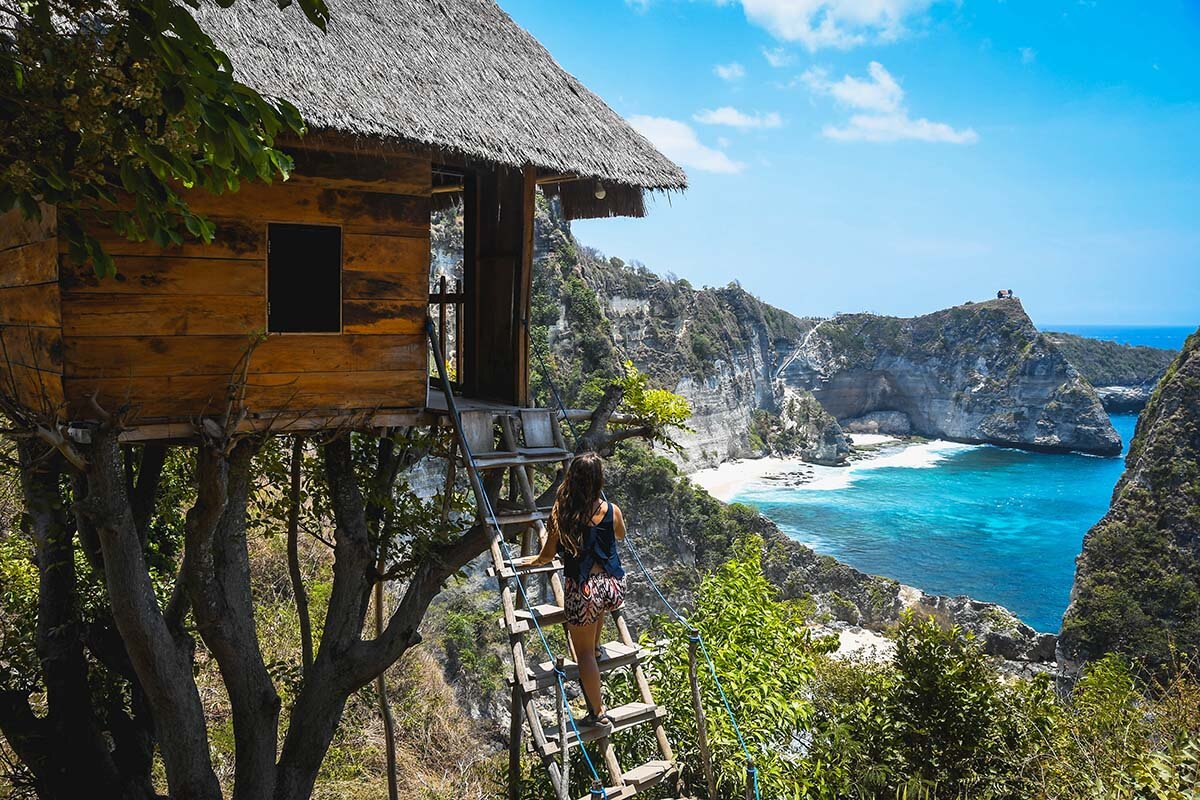
Packing the right gear can really help you reduce your waste and travel in a more eco-friendly way. However, the work doesn’t stop with packing… There are lots of other ways you can make a positive difference throughout your travels.
Opt for “greener” transportation
Opt for public transportation, walking or biking when possible. If you’re going to take a taxi or Uber, consider splitting the ride with other travelers. When you have the option to choose between air and ground travel, the latter is always a better choice for the environment.
Clean up
It goes without saying that littering is a big giant no-no. But take things one step further when you’re able… We have a personal rule whether at home or traveling that if we see trash and a garbage bin at the same time, we have to pick it up and put it in its place. And when we go on hikes, we typically try to carry out any rubbish we see. (Some places have much more than others!)
While traveling, it can also be fun and rewarding to participate in organized clean-ups. It’s a good way to meet likeminded travelers and do something good for the earth. Clean-ups are really easy to find in beach destinations specifically. Trash Hero is a great organization and has chapters all throughout Asia. If you’re traveling in a different region, a simple Google search of “[location] + clean up” should point you in the right direction.
Unplug
When in hotels or hostels, be sure to turn off the lights and AC every time you leave the room. Also, unplug your charging cords when they’re not in use so that you don’t waste unnecessary energy.
Watch your water usage
Be mindful about your shower time and turn off the faucet when brushing your teeth. This is especially important if you’re traveling in an area where water is in short supply.
Take only what’s necessary
Often when traveling, you’ll be offered things that you just don’t need. Start being more mindful and getting comfortable with politely turning down items you just don’t need.
On airplanes and on tours, water bottles are often handed out. Only take this if you don’t have your own bottle of water. At hotels, don’t take the tiny toiletry bottles unless you really need them. At restaurants, kindly turn down the plastic utensils or straw if you have your own.
Once you get in the habit of only taking things when needed, you’ll start to notice how much is wasted when you aren’t making mindful decisions.
Psst! We have an entire article with even more tips for traveling ethically that you should check out!
Ethical travel gear brands
In addition to packing specific items that will help you be a more responsible traveler, think about the brands you’re supporting with your purchases. Here are some of our favorite brands that have have cool missions:
- Banana Backpacks: These backpacks are made in a facility that pays fair wages. Plus, a purchase of a backpack helps support the education of one child in Cambodia, and your backpack will be embroidered that child’s name.
- Tree Tribe: Eco products — like clothing, water bottles, and pouches — all made mindfully. Plus, purchases help to plant trees.
- Coalatree: “Eco-minded” outdoor apparel that is perfect for adventuring. Ben is obsessed with their trailhead pants!
- Allbirds: Incredibly comfy wool shoes that are great for travel and are made with natural and recycled materials.
- Patagonia: With all sorts of clothing and travel gear to choose from, Patagonia is an OG brand in ensuring they are going good for the planet and operating with the earth in mind. They work hard to repair their products to keep them out of landfills.
- Cotopaxi: This travel gear brand is B Corp certified and 1% of revenue goes to supporting community projects for places in need. When you buy a Cotopaxi backpack or jacket, you can be sure it was manufactured by someone receiving a fair wage.
Interested in learning more about Responsible Travel?
We are passionate about traveling in a way that is ethical, sustainable and responsible. Visit our resources page on Responsible Tourism to learn more about how you can create a positive impact everywhere you travel! Or read some of our favorite articles on responsible travel below…
- How to Volunteer Abroad Ethically
- Simple Ways to Reduce Your Plastic Use Everyday
- How to Plan an Eco-Friendly Road Trip
- Tips to Become a More Responsible Traveler
Save this article on Pinterest for later!
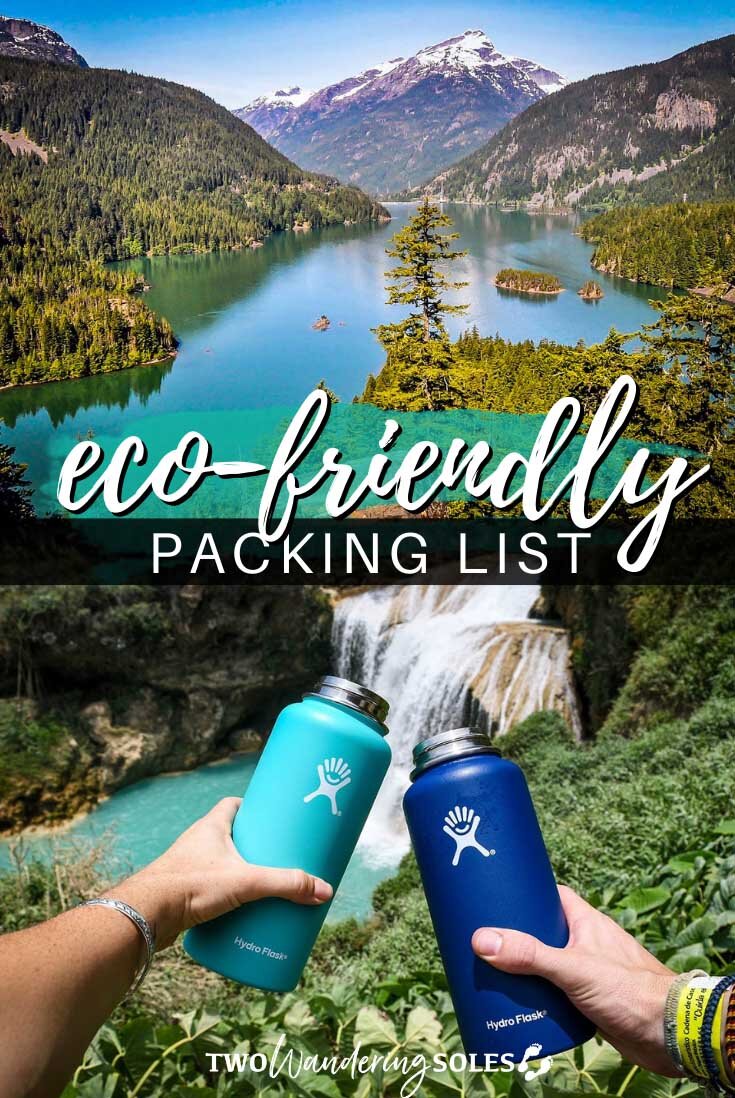
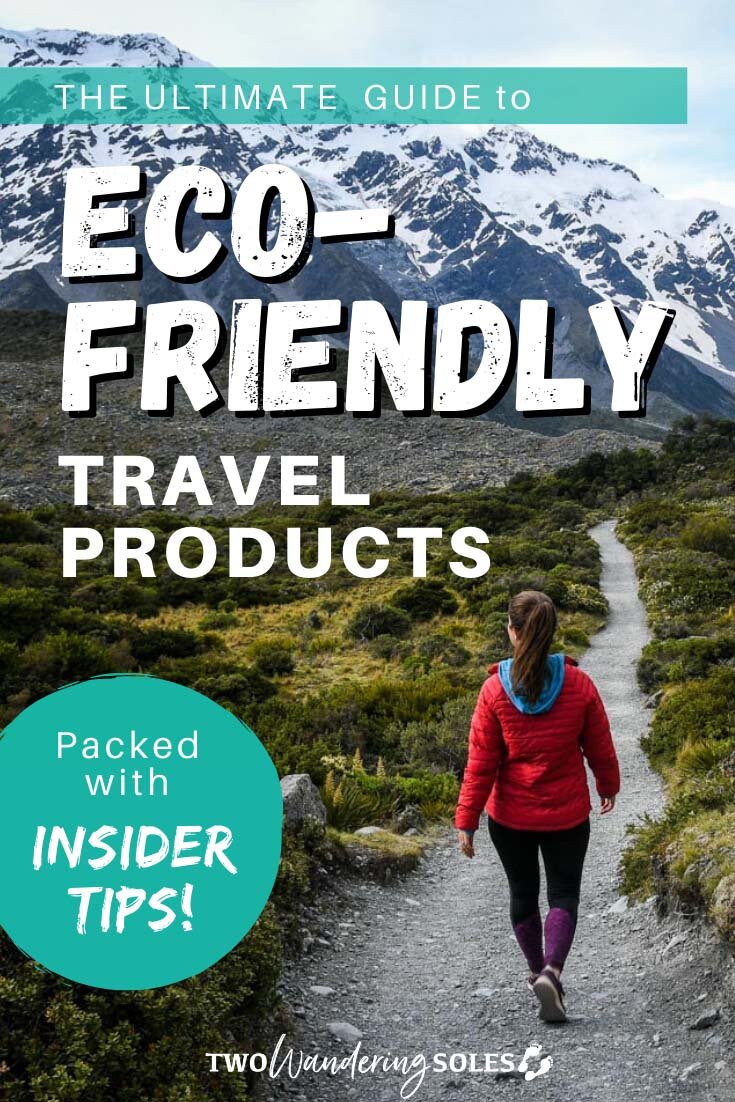
We want to hear from you!
This list is by no means absolute. What products or travel gear help you see the world a little more responsibly?

I’ll be heading to Thailand later this year and I actually hadn’t thought about the straws. Thanks for bringing this to my attention 🙂 The reusable straw is a great idea. Will definitively check that out. Love my kindle. Perfect for traveling and I also download books from my local library as well. Great list!
Definitely bring a reusable straw to Thailand. All stores and restuarants will want to give you plastic ones and you’ll have to refuse, but most of the time if you show your straw they will understand! Thanks for thinking of eco-friendly products!
I have got a few things on this list and some I need to get. It not just saves on plastic and helping the earth its great for traveling. It makes my life alot easier.
It truly is a Win-Win for our bank accounts and the world. Reducing plastic is great!
A few of these I have at home and use daily but never thought to take with to travel (I’m going to get the steripen ASAP)! Agreed, for anyone on the fence about the menstrual cup, just do it, you will thank yourself later and wonder why you didn’t do it sooner!
Thanks Monica! We love the steripen and would never travel without it.
I LOVE this so much! I’m glad that I already have a few of these as essential packing items, but a few I’ve been on the edge about (looking at you menstrual cup), and haven’t even thought about others! Those collapsible cups are awesome, I definitely want them! Thanks so much for this reminder of being both respectful and responsible, I need to go on an Amazon binge now!
Thanks Suzy! We love our collapsible cups and use them for everything, from soup to wine to guacamole dip bowl. They are so easy to clean and pack up nice and small.
Fantastic list for those looking to become eco friendly! I always find it interesting to read about the plastic straws. As an adult I never use straws except for those one off visits to places like Mcdonalds that provide straws with their drinks. I hope companies will also start making the move to eliminate plastic and use other alternatives.
We cannot agree more! The change will have to come from big companies making these big move to ban plastics. Until then, we will continue to refuse to use them as much as we can.
A really interesting list, we all need to do more to help the environment! I’m definitely going to buy a Steripen now as its such a good idea
Great to hear, Rachel. We love our Steripen and swear by it!
I never travel without a refillable water bottle! I can count the number of times I’ve bought bottled water on two hands – though I’m lucky to be from an area that has great-tasting, clean water. It’s a huge money savings too! I fly almost weekly for work and fill it up after going through airport security and sometimes again if I’m making a connection. I’d easily be spending $10 on bottled water every week if I was buying it. That adds up in terms of money and waste.
That would add up to be a lot, Kim. Glad to hear you have chosen to use a reusable bottle. They keep water colder and they save you money in the long run. Win-Win!
These are some great ideas, I already do a few of them but some of them I had not considered! The Steripen seems like a must to me for sure. We haven’t done much travel yet that has needed that but of course we hope to in the future! Cups, utensils and water bottles all make a lot of sense and I hadn’t considered a micro-fibre towel before…again, thanks for these great earth saving ideas! 🙂
Thanks Meggan. We love these products and we’re happy to hear you like them too. The micro-fibre towel is key when traveling because it dries so quickly.
I’m glad I use lots of those already 🙂 I’m always on the look out for travel product which are sustainable, but the Steripen! That’s new to me and I most certainly will be researching into this! I just use old fashioned purification tablets…this might totally rock my world! Thanks for the enlightenment 🙂
No problem Becki, glad we could share some of our favorite eco friendly products with you!
I pretty much use all these things, and not just for traveling. I hadn’t tried or heard of the Steripen, DO you just put it in the water and wait? I will have to check that one out.
Yes, Alice, there are two sensors near the blub that once they submurge in water, the UV light comes on for 90 seconds. It’s a pretty cool product.
good article.thanks for sharing it
Thanks so much Rainbow, glad you like the eco-friendly products as much as we do!
Great advice. I enjoyed reading your article, thanks for sharing.
Thank you so much, glad you liked it. Have you ever tried any of these products?
Great tips! Does the Steripen make the water taste decent? I heard mixed reviews! As long as it’s safe water, though! We usually find places to refill our water but it was difficult in India. Felt SO guilty buying plastic, especially seeing all of the plastic trash there.
The only thing with microfiber and synthetic material is that they release tons of microplastics into the water when washed. I recently learned about this and I don’t want to part with my lightweight microfiber towel! I’m in a dilemma – throwing it away would be wasteful, donating it – well, someone else would use it and get microplastics into the water. So I’m not going to beat myself up about it. I did hear about a bag you can put it in when washing so that it captures the microplastics, so that’s something to look into!
Hey Lianne, great questions!
Steripen doesn’t do anything to the taste of the water. So if the water tastes bad to begin with, the Steripen won’t make it taste any better (unfortunately hehe). But if the water tastes good, using a Steripen won’t alter the taste like an iodine tablet.
And I totally hear you on the microfiber. I’ve been reading more about micro-plastics and I literally JUST heard about that same bag 2 days ago haha! What we’ve found though is that we have to wash our microfiber towel far less than a regular towel, and I think we’re going to try to get a bag like the one you mentioned so hopefully we can put any other synthetic/athletic clothing (which also releases micro-plastics) inside when we wash as well 🙂
These are awesome! We love using our water sterilizer to avoid water bottles on the road. It’s so important to reduce the amount of waste we create, especially when we are guests in other countries.
We completely agree Kevin! Creating less waste and making the locals happy sound like a responsible traveler to me. Thanks for helping change the way we think about travel.
Thank you for your great tips. I try to live as sustainable as I can and here are some good suggestions both for travelling times and when we are at home.
Thanks Maria. That’s true, you don’t have to be traveling to use these products. We use a lot of them at home as well.
We use reusable bags and water bottles all the time! Hopefully more people start using all of these so there’s less plastic in the landfills.
I agree Jon. I always carry a reusable water bottle with me. And a reusable bag is so easy to through into your backpack or even to keep in your car when going to the grocery store.